Enjoy big savings this spring with our latest offers!
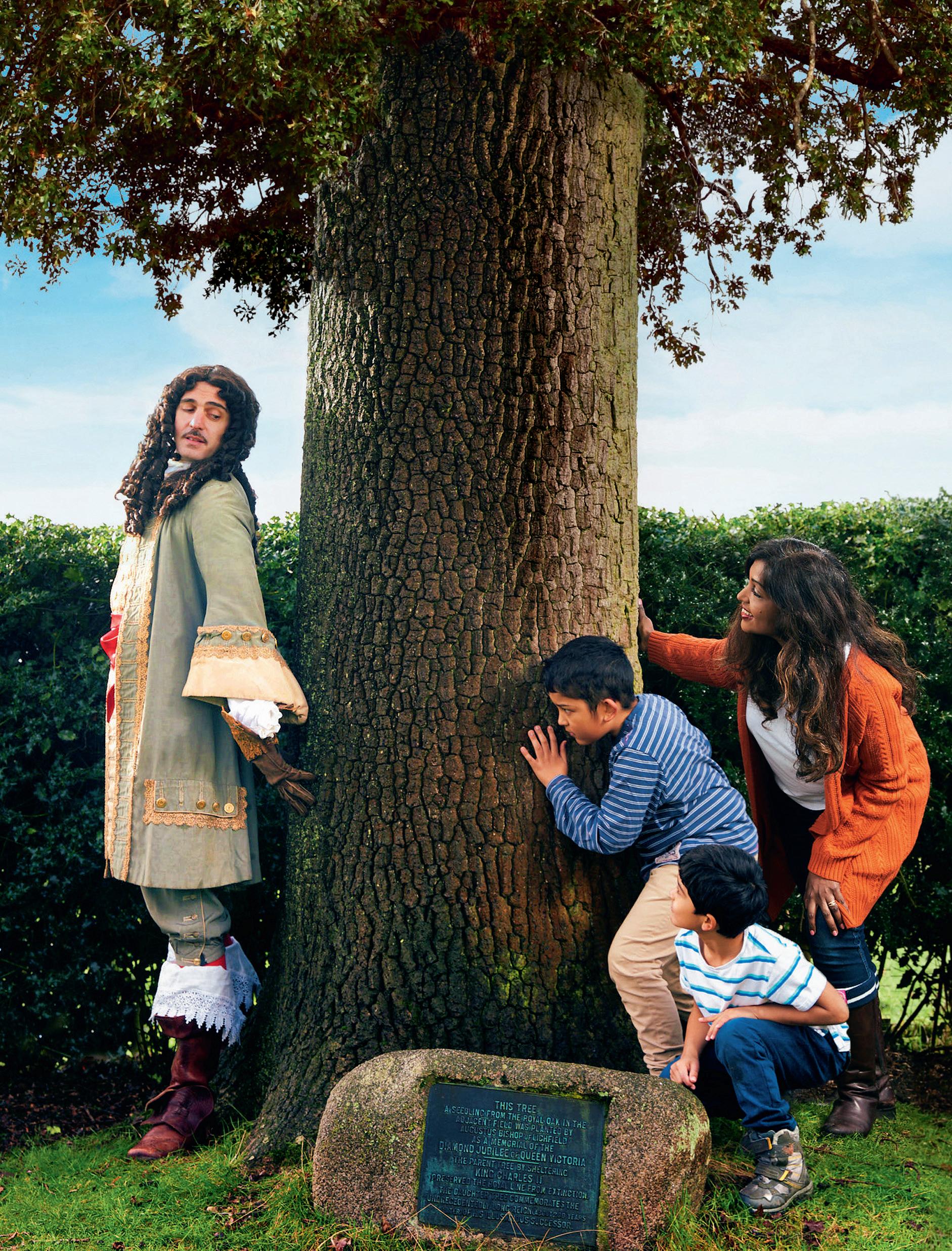
CALLING ALL EXPLORERS
Embark on an epic journey back in time with our Easter Adventure Quest events

Enjoy big savings this spring with our latest offers!

CALLING ALL EXPLORERS
Embark on an epic journey back in time with our Easter Adventure Quest events
Discover the dramatic escape of King Charles II at Boscobel House in Shropshire
STEP INTO A COSTUME DRAMA
The new storytelling project bringing the history of Bolsover Castle in Derbyshire to life START YOUR STAYCATION
Where to plan a summer journey into England’s past with your membership
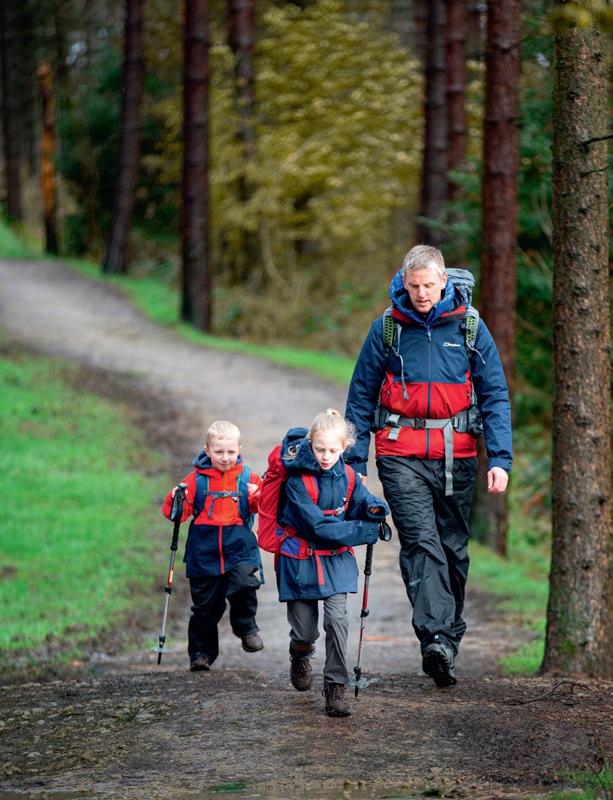

Get in touch
W www.english-heritage.org.uk/members
E membersmagazine@immediate.co.uk (for magazine queries only) or members@english-heritage.org.uk (for membership queries)
T 0370 333 1181 PO Box 569, Swindon, SN2 2YP
For English Heritage Luke Whitcomb, Johanna Lovesey, Tom Dennis, Tony Dike, Tom Moriarty, Tersia Boorer, Fran Gibbons, Richard Leatherdale
For Immediate Media Co.
Group editor Matt Havercroft
Group production editor Oliver Hurley
Senior art editor Sam Freeman
Art editor Elaine Knight-Roberts
Account director Esther Procee
Account manager Joanne Robinson
Director Julie Williams
Editorial director Dan Linstead
Design director Will Slater
Consultant editor Dave Musgrove
Advertising manager Jamie Bolton
Advertising enquiries 0117 300 8518; jamie.bolton@immediate.co.uk
Contributors
Jon Bauckham, Jo Caird, Megan Leyland, Steven Brindle, Louise Cooling, Therron Walstead, Olivia Fryman, Michael Carter, Paul Pattison, Kathryn Bedford, Susan Greaney, Eleanor Matthews, Debbie Radcliffe, Bethan Stanley, Emily Parker, Andrew Hann, Martin Allfrey, Harriet Cooper, Andrew Roberts, Jeremy Ashbee, Roy Porter, Mark Douglas
English Heritage Members’ Magazine is published on behalf of English Heritage by Immediate Media Co, Eagle House, Colston Avenue, Bristol, BS1 4ST T +44 (0)117 927 9009 W www.immediate.co.uk
Advertising income
Thank you to our advertisers and partners. The income we raise from adverts and inserts helps to cover the costs of producing your magazine.
Support us
English Heritage is a charity. Without the support of our Members and donors, our work would not be possible. To find out more about how you can help by making a donation or leaving a gift in your will, please visit www.english-heritage.org.uk/support-us or call the fundraising team on 020 7973 3797.
English Heritage cares for more than 400 historic monuments, buildings and places – from world-famous prehistoric sites to grand medieval castles, and from Roman forts on the edges of the empire to Cold War bunkers. Through these we bring the Story of England to life for more than 10 million visitors each year.

January to December 2020: 446,054
Registered charity no. 1140351 (England)
Registered company no. 07447221 (England)
Product code: 200712
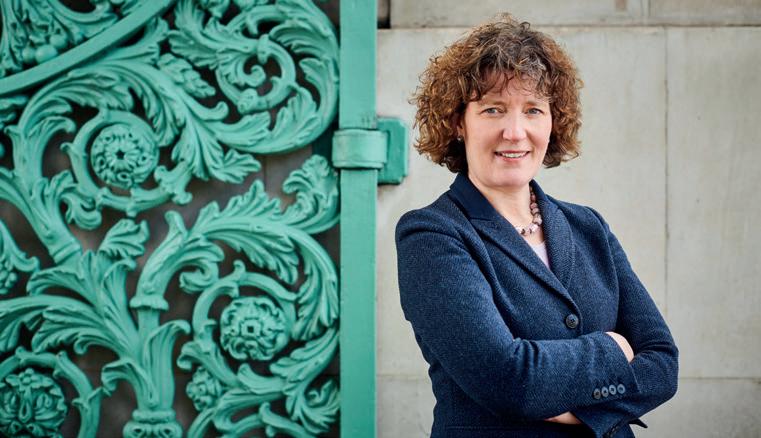
As we usher in a new season at our properties, there is much to look forward to. Highlights this spring include the reopening of Boscobel House and The Royal Oak in Shropshire, following the completion of our project to improve facilities and share its remarkable history (see page 16). Plus, there’s an innovative new presentation at Bolsover Castle in Derbyshire, combining illustrations and costumes to tell the stories of former owners Margaret and William Cavendish, along with the castle’s incredible wall paintings (see page 36).
Over on page 22, we also reveal the details of five major conservation projects about to get underway, along with the launch of our new ‘conservation camper’ that will allow you to get expert insight into our conservation work at selected sites across the country.
If you’re planning a summer staycation, don’t miss our feature on the sites to visit while on your travels (see page 42). I do hope you enjoy this issue in the expectation of getting out again after a long winter indoors.
Kate Mavor Chief Executive

Martin Allfrey Senior curator of collections (West)
On page 32, Martin reveals the story of a bronze axe head found in the grounds of Beeston Castle in Cheshire, and the technological turning point it represents

Emily Parker Landscape advisor Emily joins our panel of experts tasked with answering your questions on everything from Roman remains and coastal erosion to Wrest Park’s landscape designer over on page 53

Mark Douglas Senior properties curator (North)
On page 74, Mark explains how intrepid explorer and writer Gertrude Bell found her home from home at Mount Grace Priory in North Yorkshire
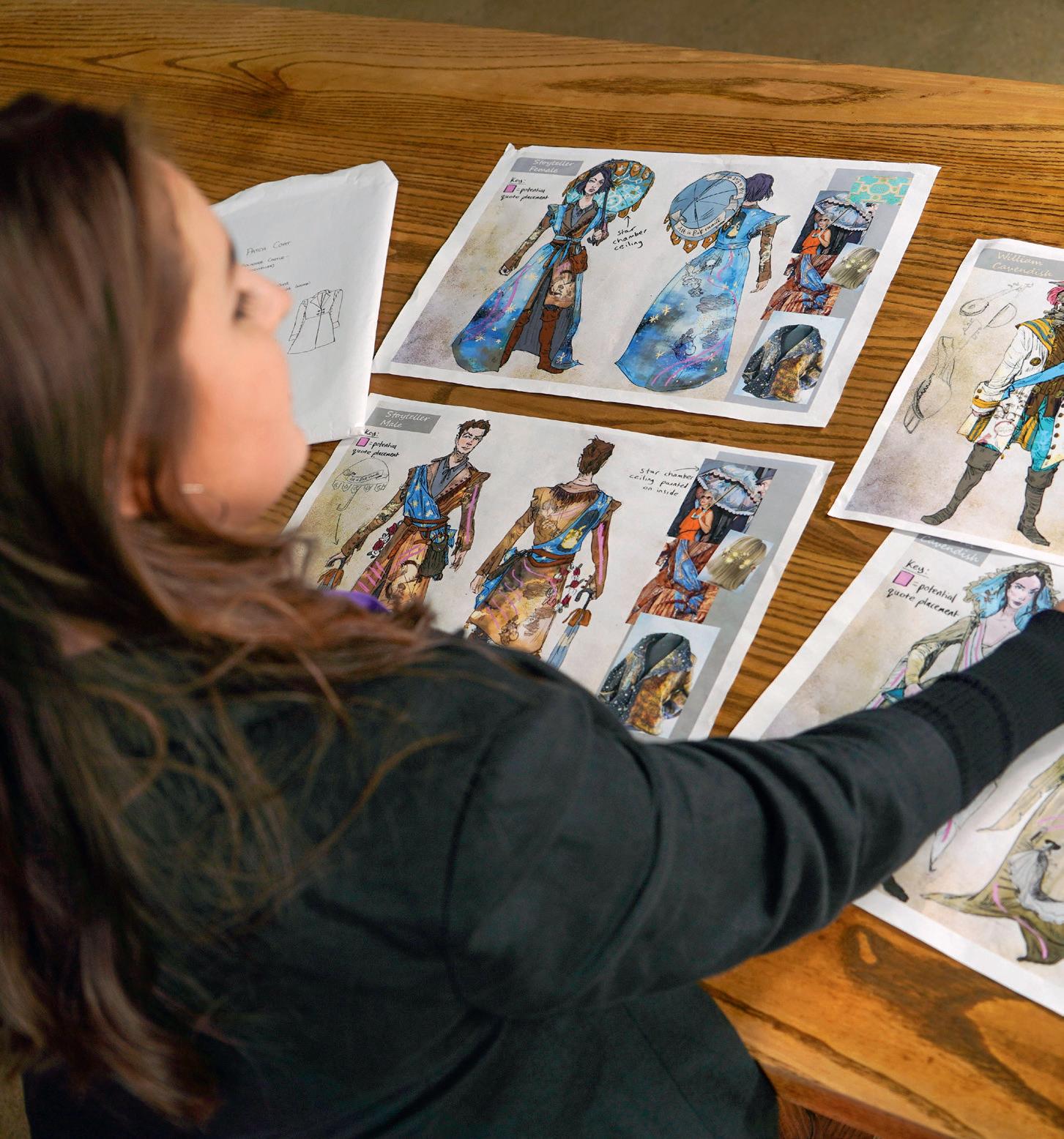


Picture Start your legend with our epic Easter Adventure Quest events
Kirby Hall’s new exhibition, archaeological discoveries at Tintagel Castle and more
questions Put your knowledge of our historic gardens to the test with our quiz





teacher who wrote an instrumental album inspired by our sites


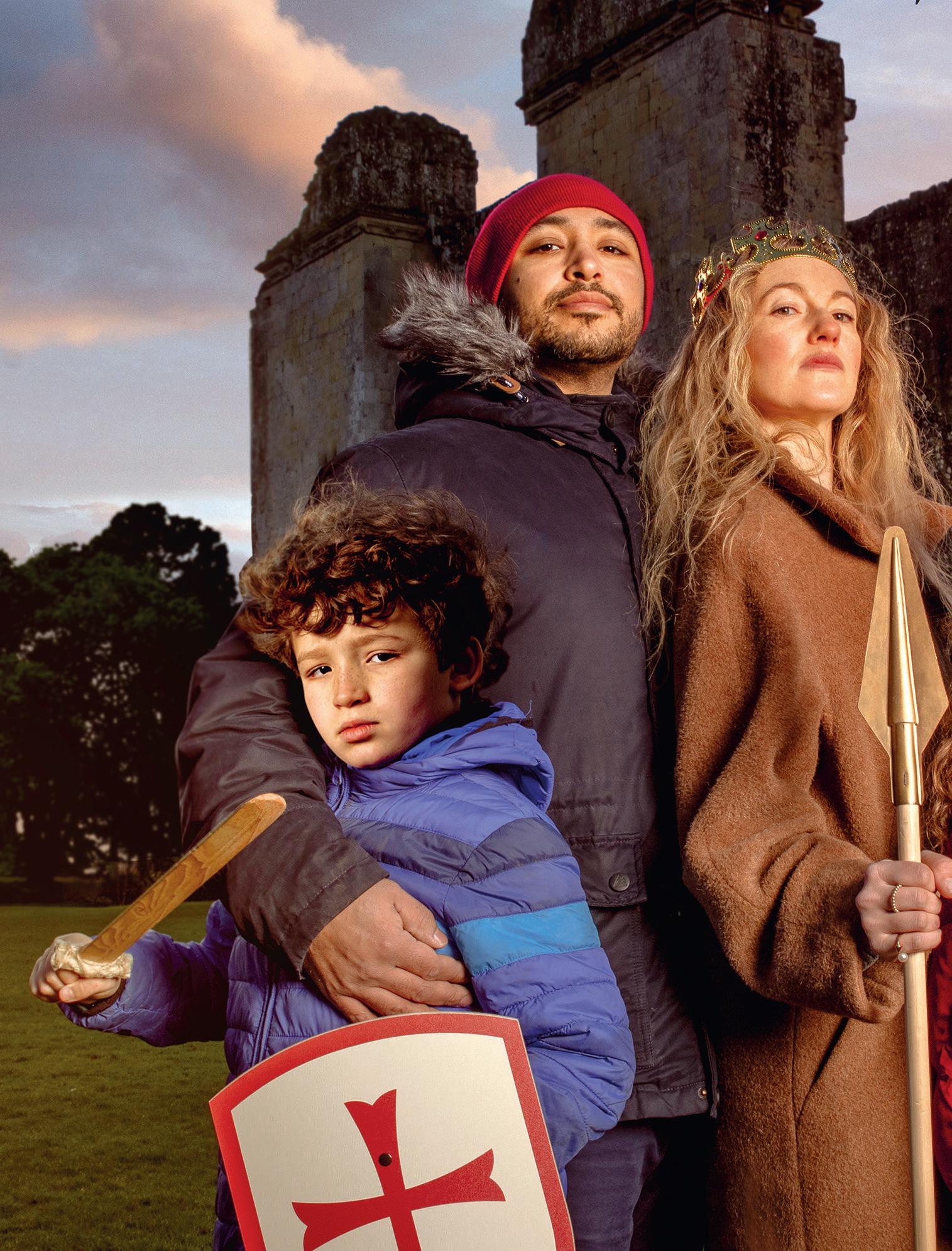

Are you ready to see if you’ve got what it takes to complete our Easter Adventure Quests? Crack the clues as you and your family follow the trail through the historic grounds. Intrepid adventurers who track down the dragon eggs on our quest boards will get a certificate to prove it. The quests are taking place at over 20 sites around the country, and cost just £1.50 per child. www.english-heritage.org.uk/easter
Keep up to date with the latest news and developments
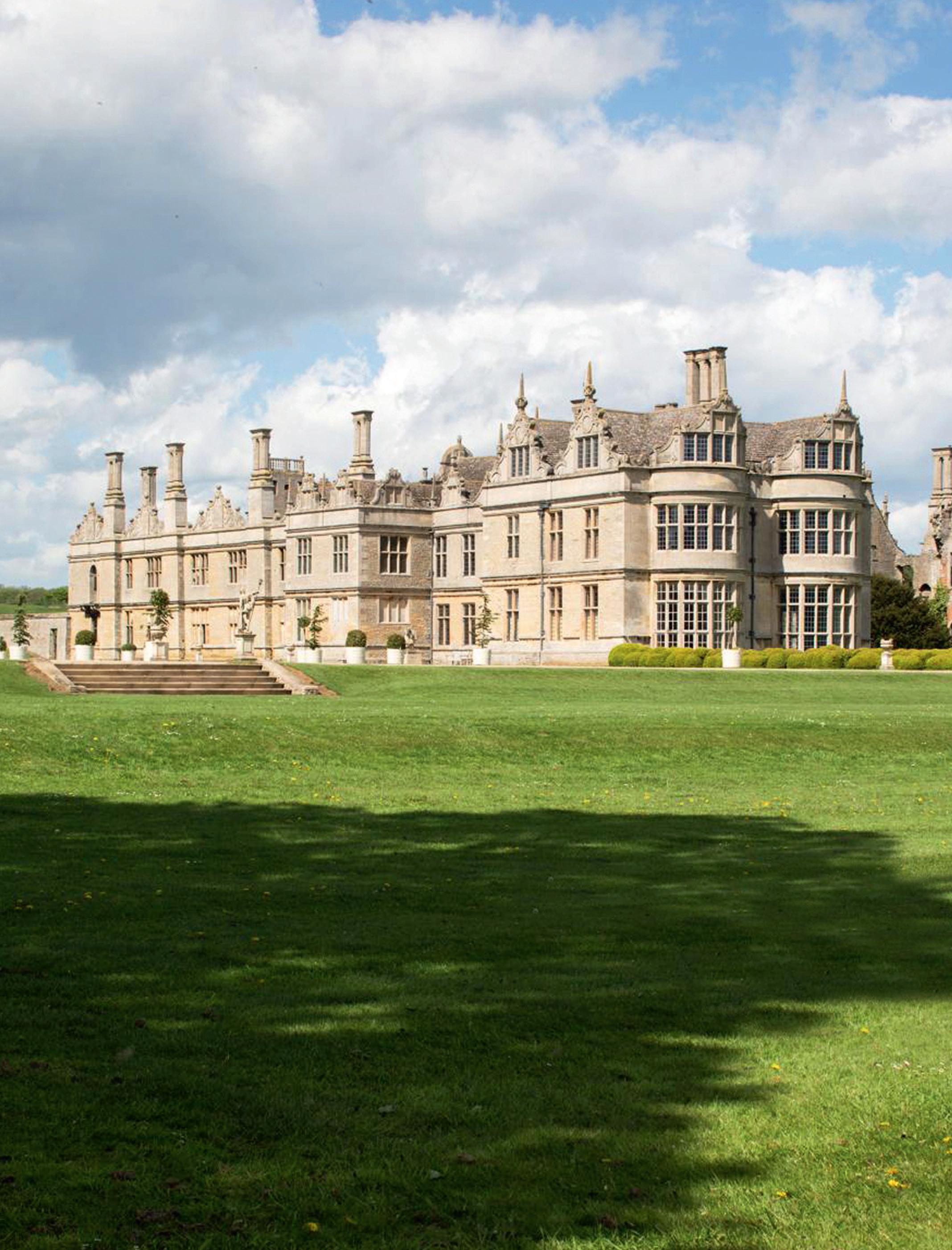
An innovative project due to launch at Kirby Hall this spring will bring to life the stories of former residents of this atmospheric Northamptonshire mansion.
A new exhibition, featuring collections and interactive displays, will breathe life back into the empty rooms, following the hall’s many stories and the diverse characters who lived and worked in one of England’s greatest Elizabethan and 17th-century country houses. State apartments have been reinterpreted to evoke the atmosphere of the grand house in 1619, based on a surviving inventory detailing its decorations and furnishings.
Visitors will experience the sights and sounds that would have greeted King James I during a visit to Kirby in the early 17th century – including
8 www.english-heritage.org.uk
wall hangings and period music. A new audio guide and trail further lead visitors around the house and garden, while displays introduce key figures from the story of Kirby. These include James Chappell, a black servant who saved the life of one of Kirby’s owners, Christopher Hatton, after an explosion on the island of Guernsey in 1672.
‘Visitors will be able to imagine what Kirby would have been like it its heyday,’ says Nadine Langford, the project’s interpretation manager. ‘The new interpretation brings to life some of the drama of Kirby in the early 1600s through creative and playful interventions, some of which we’ve never tried before at English Heritage.’ www.english-heritage.org.uk/kirby-hall
A major project at Kirby Hall, due for completition this spring, will include new research on the history, stories and collections of the site
Work to restore a unique folly in the gardens of Brodsworth Hall in South Yorkshire is due to be completed this March. Known as an eyecatcher, it was built in the 1860s and was used to draw the eye down the garden’s target range. At the opposite end of the range is the target house, which was thought to have been used for refreshments during archery practice. The original planting of the banks of the eyecatcher has been reinstated with 800 ferns – including Dryopteris affinis and Polystichum lonchitis –greatly adding to the garden’s collection of rare native British ferns. The project further restores the garden to its Victorian splendour, following the successful revival of the Target Garden (pictured right). www.english-heritage.org.uk/brodsworth

The sieges endured by Carlisle Castle, on the Scottish border in Cumbria, from 1173–1745. www.english-heritage. org.uk/carlisle
The years since the death of the poet John Keats. He has an official plaque in Hampstead. www.english-heritage. org.uk/blue-plaques
The number of years since Henry Bathurst, Baron Apsley, commissioned Apsley House in London. www.english-heritage.org. uk/apsley
Who was St Aelred?

Sculptor Barbara Hepworth among the most recent blue plaques

He was an influential author, preacher, theologian and diplomat from the north of England, born in the early 1100s. He is best known for being the abbot of Rievaulx in North Yorkshire between 1147 and 1167. Aelred was regarded as a saint upon his death. Why create a trail specifically focusing on him? He is the most important person ever to be associated with Rievaulx and, due to his writings, we
know a lot about him for a 12th-century monk. Upon arrival, each visitor is given a map that leads you in Aelred’s footsteps around the ruins of the monastery, with new story panels that tell you about his life. Why has Aelred become an LGBTQ+ icon? Many believe there is evidence of same-sex desire in his extensive writings, and this has led a number of LGBTQ+ religious organisations to adopt him as their patron saint. Because he lived so long ago, it is impossible to know the true nature of his sexuality. What is clear is that Aelred had strong attachments to his brother monks. His writings on friendship are still in print and, in many ways, are as relevant today as they were more than 800 years ago. www.english-heritage.org.uk/rievaulx
An eclectic variety of figures have been commemorated in the most recent round of the London blue plaques programme. The sculptor Barbara Hepworth (pictured) is usually associated with St Ives in Cornwall and with her native Yorkshire. However, she spent the first part of her artistic career in north London, and is now commemorated at 24 St Ann’s Terrace in St John’s Wood – alongside her thenhusband John Skeaping, another renowned exponent of direct carving. Author and anti-slavery campaigner Ottobah Cugoano has a new plaque on the Pall Mall house where he worked as a servant. His account of his earlier experiences of slavery and the slave trade – published in 1787 – helped to jog the national conscience towards the abolition of both. The innovative photographer Cecil Beaton is honoured at his former home in Kensington, while the Nobel prize winning physicist Abdus Salam – much praised for his promotion of science in the developing world – is also celebrated, in Putney. To find out more about blue plaques, order a copy of Heritage Guide to London’s Blue Plaques from www. english-heritage shop.org.uk, or download the Blue Plaques of London app for iPhone or Android devices.

Win Scutt Properties curator (West)

Tintagel’s true history is just as potent at its myths
Tintagel Castle in Cornwall may be closely associated with the mythology of King Arthur. But when, in 2016, we launched the Tintagel Castle Archaeological Research Project (TCARP), it wasn’t to go in search of legends but to investigate the true story of this extraordinary settlement.
Now this five-year project is coming to an end, it has shed fresh light on what life would have been like at Tintagel during a 400-year period in the Middle Ages.
When Roman Britain was fragmenting into small kingdoms, Tintagel was a major centre of power and wealth. It was a town with perhaps more than 100 buildings. Large quantities of wine amphorae and tableware from Greece, Asia Minor and North Africa show the townspeople had sophisticated tastes and trading links as far as the Byzantine world.
We meticulously excavated a street and alleyway, surrounded by three buildings with metre-thick walls, on a terrace on the southern side of the headland. A team of Britain’s top specialists spent the last four years analysing the stratigraphy, finds and samples.
The stories of King Arthur have swirled around the rocky headland of Tintagel for hundreds of years. Thanks to the team’s work, we now know much more about the site that helped to inspire these legends. To discover more about the project, listen to episode 104 of The English Heritage Podcast (out on 25 March). www.english-heritage.org.uk/podcast
Intriguing artefacts to look out for when visiting our sites
1

The Artist in the Character of Design, 1782
This painting, featuring a self-portrait of Angelica Kauffmann, has returned to Kenwood after appearing in an exhibition in Düsseldorf.
INSTANT EXPERT
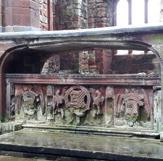
Vaux and Dacre tombs, 14th–16th centuries
A legacy donation has enabled the conservation of these family monuments in the church at Lanercost Priory in Cumbria.

Portrait of William Laws, mid-19th century
This recently donated painting can now be seen in the house at Prudhoe Castle, Northumberland, in which Laws’ family lived.

Why will Belsay Hall be cloaked in scaffolding?
The hall’s roof is being repaired as part of Belsay Awakes, a project that will transform the experience of visiting the hall, gardens and castle. What happened to the roof? Though not as ancient as the Greek monuments that inspired it, the ‘new’ hall at this Northumberland gem is over
two centuries old – unsurprisingly, parts are in need of a touch-up. Is inside out of bounds?
No, the hall, castle and gardens will remain open. There may be some restrictions on access but there will also be opportunities to see conservation work in action. It all sounds very ambitious. Yes, and all possible thanks to a National Lottery Heritage Fund grant. www.english-heritage.org.uk/belsay
A large key that opened the door of St Leonard’s Tower in Kent has been recovered by English Heritage – nearly half a century after it went missing. The key was returned late last year, accompanied by an anonymous handwritten note saying, ‘Borrowed 1973, returned 2020 –sorry for the delay.’
‘It’s certainly one of the most puzzling packages we’ve ever received,’ says senior properties curator Roy Porter (pictured with the key and the note). ‘It’s a modern mystery to add to the historical questions posed by the tower.’ At about 100 years old, the key is much younger than the Norman structure, which is believed to date from the end of the 11th century. www.english-heritage.org.uk/stleonards


*Quote Ref Rotary0321
There are many reasons to change your conservatory roof with Green Space UK
INSTALLED IN 1 DAY
“What a difference a day makes as the saying goes, and yes, that’s all it took to install.”
Mr & Mrs Barber, Wells
WARMER IN WINTER
“There is no doubt that the conservatory is much warmer than previously, and no, the room is not darker either!”
David Birch, Chichester
USABLE ALL YEAR ROUND
“The conservatory is now used throughout all seasons of the year and is far more comfortable to sit in whatever the weather outside.”
Mr & Mrs Gibson, Portishead


“It’s the best home improvement we have ever made. Our conservatory is now our dining room in the garden.”
Mike Millis, Middleton On Sea

MOULD & CONDENSATION
“This is the best thing we have done in this house. Used to run with condensation and now zero.”
Karen Thomas, Chippenham
COOLER IN SUMMER
“You could have fried an egg on the table in there in the summer, I now look upon the conservatory as a new room. It is quiet, restful and cosy.”
Carol Doyle, Surrey
REDUCES ENERGY BILLS
“I’ve already turned the underfloor heating down. Lovely job guys, thank you!”
Anne Bird, Bristol
QUIETER IN BAD WEATHER
“For the first time in 10 years we do not have to close the door to the conservatory when it rains, as the noise is minimal and before I found it difficult to hear the TV over the loudness of the rain on the old roof.”
Mr & Mrs Bailey-Webb, Warsash
We can offer contact-free installations, and perform these in less than a day!




SAVE 20% Enjoy an exclusive discount in our shops (on-site and online) and cafés*



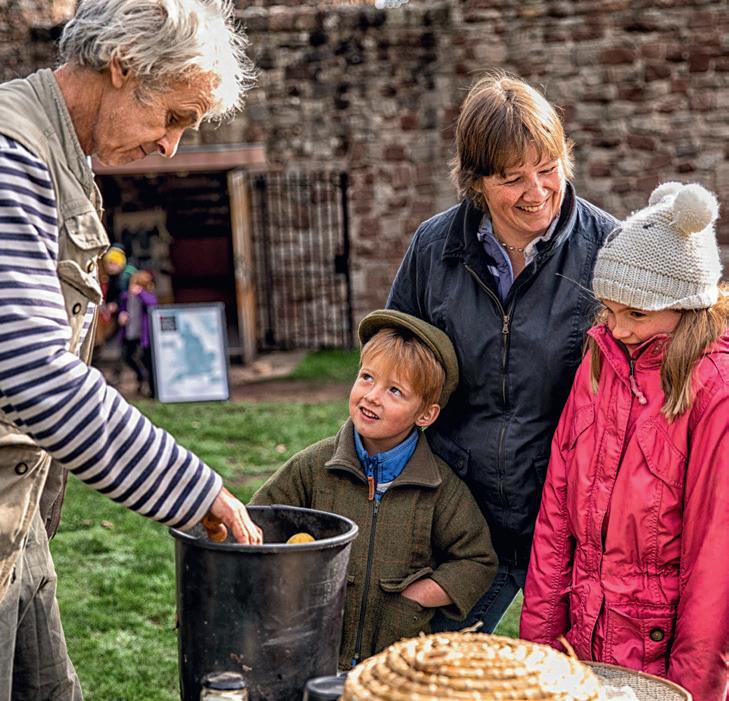



As a special thank you for your support, we’re hosting over 60 FREE Members’ events over one week in April. Book from 17 March to enjoy everything we have organised exclusively for you

This year will see our first ever Members’ Week, created exclusively for you as a thank you for your valued support. For one special week, from 12–18 April 2021, you will be able to enjoy a huge variety of free events, talks, activities and workshops, which have been designed to appeal to all ages and interests.
With over 60 events planned to run online and at English Heritage sites across the country, these include everything from behind the scenes tours, conservation in action demonstrations and garden talks, to family friendly activities and workshops. For our youngest supporters we’ve got fun fight like a knight workshops, fascinating foraging walks and create your own land art sessions.
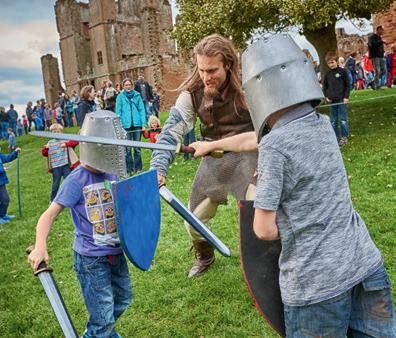
PAGES 62 & 64
For keen gardeners, there are guided tours of our spectacular green spaces, including those at Audley End in Essex, Brodworth Hall in South Yorkshire and Osborne on the Isle of Wight.
For those of you looking for hidden history don’t miss our expert-led tours of Middleham Castle in North Yorkshire, Dover Castle in Kent and more. Plus, we’ve got a selection of conservation-inaction showcases nationwide.
* As an extra treat, we’re also offering Members a 20% discount in both our cafés and shops. To claim your shop discount online, go to www.englishheritageshop.org.uk and use the code MBW21 (valid from 12–18 April 2021) when you checkout.


Country Life Butter is the proud supporter of English Heritage Members’ Week. Country Life celebrates its British roots and countryside heritage, and is delighted to support institutions such as English Heritage, which play a key role in conserving some of England’s finest historic sites and in bringing history to life for people of all ages.
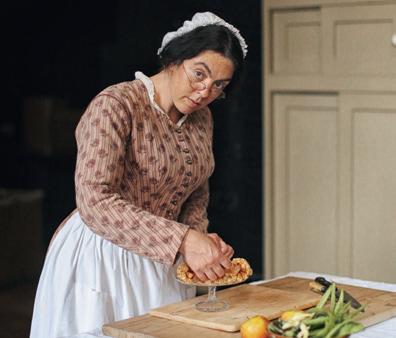
PAGE 65
GO TO THE MEMBERS’ AREA OF OUR WEBSITE OR TURN TO PAGE 57 TO SEE THE FULL MEMBERS’ WEEK PROGRAMME LISTINGS
MEET THE EXPERT
I have been working professionally as an artist since 2017. In my work I explore themes related to race and the complexities of the Black identity and Black experience using archival images, historical paintings, family photographs and literature. I use portraiture and video as a tool to highlight the stories of Black individuals originating from the African continent and the complex relationships they have with Western society and culture.
I first read about Sarah Forbes Bonetta in David Olusoga’s book Black and British. She was born Omoba Aina, a West African princess of the Yoruba people, in 1843, but wars with the nearby Dahomey kingdom left her orphaned and enslaved to King Ghezo of Dahomey as a young girl. At the time, the British Empire was still enforcing the Slavery Abolition Act, which British Parliament passed in 1833, in areas viewed as slavery hotspots, and so Captain Forbes had been sent to negotiate with King Ghezo. Forbes was unsuccessful, but was ‘gifted’ Omoba Aina for Queen Victoria. Captain Forbes renamed her Sarah Forbes Bonetta after his ship the HMS Bonetta. On their return to England, Queen Victoria is said to have been very taken with Sarah and assumed responsibility for her welfare, paying for her education and effectively making Sarah her protégée.
After discovering Sarah’s story, I spent a lot time researching it and the times in which she lived. It became clear that Sarah can represent multiple identities: she was African royalty, an orphaned child, a slave and a woman, and she became part of the British monarchy. I wanted to try to understand what her time at Queen Victoria’s former home at Osborne (where her portrait will hang) would have been like. I spent a lot of time looking at Victorian portraiture and picked the image I found most striking to communicate a regal aura, which I wanted the painting to emanate.

Clockwise from above Hannah with her portrait of Queen Victoria’s goddaughter, Sarah Forbes Bonetta, at Osborne on the Isle of Wight. The painting is due to go back on display here as part of a nationwide exhibition in May; Hannah and her painting in Osborne’s Grand Corridor; Sarah Forbes Bonetta in London in 1862. She later died of tuberculosis in 1880, aged 37

There were many rules about Victorian dress and so I wanted her dress to be a bold statement and challenge our perceptions of black women in Victorian times. My colour palette was in keeping with Victorian styles and the addition of fabric added another layer, which speaks to Sarah’s multilayered identity, and of the possible barriers she faced here in England.
Last year, I was asked to be part of English Heritage’s project highlighting overlooked historical figures of African descent connected with their sites. I felt a great sense of achievement to be reinserting and affirming Sarah’s story at Osborne. June 2021 will see my painting go back on display, along with five other commissioned portraits of historical figures of African descent at other sites. This project, called Painting Our Past: The African Diaspora in England, is a step in the right direction towards reconciling ourselves with uncomfortable aspects of British history.
SEE THE PORTRAITS
For details of all of the paintings going on display, go to www.english-heritage.org.uk/painting-our-past
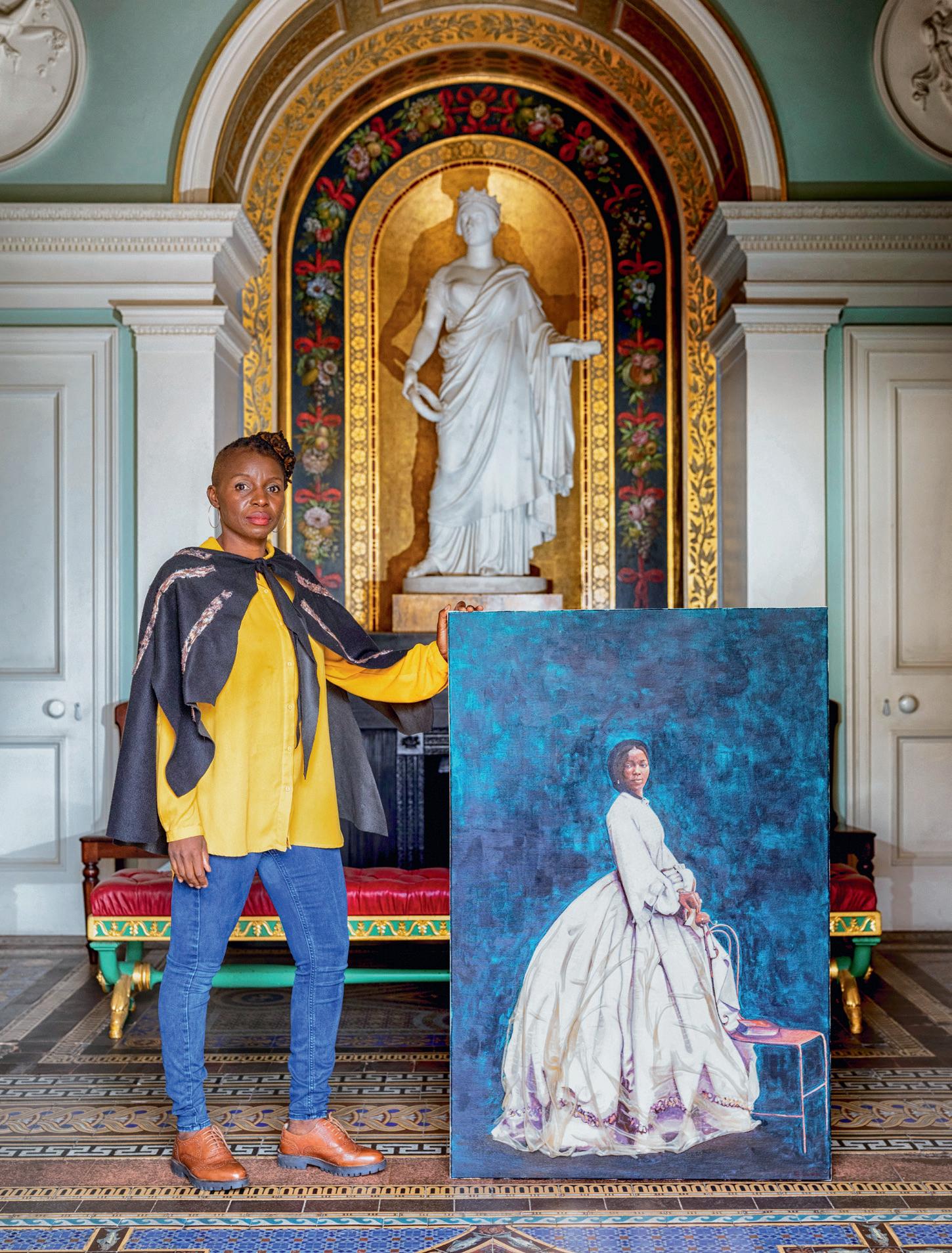
‘I felt a great sense of satisfaction to be reinserting and affirming Sarah’s story at Osborne’

Shhh… can you keep a secret? Boscobel House in Shropshire is reopening to share its stories of King Charles II’s great escape, persecuted priests and life on a Victorian farm. All you need to do is find your way here and everything will be revealed
Go to the English Heritage website to check the latest information on access to sites and events
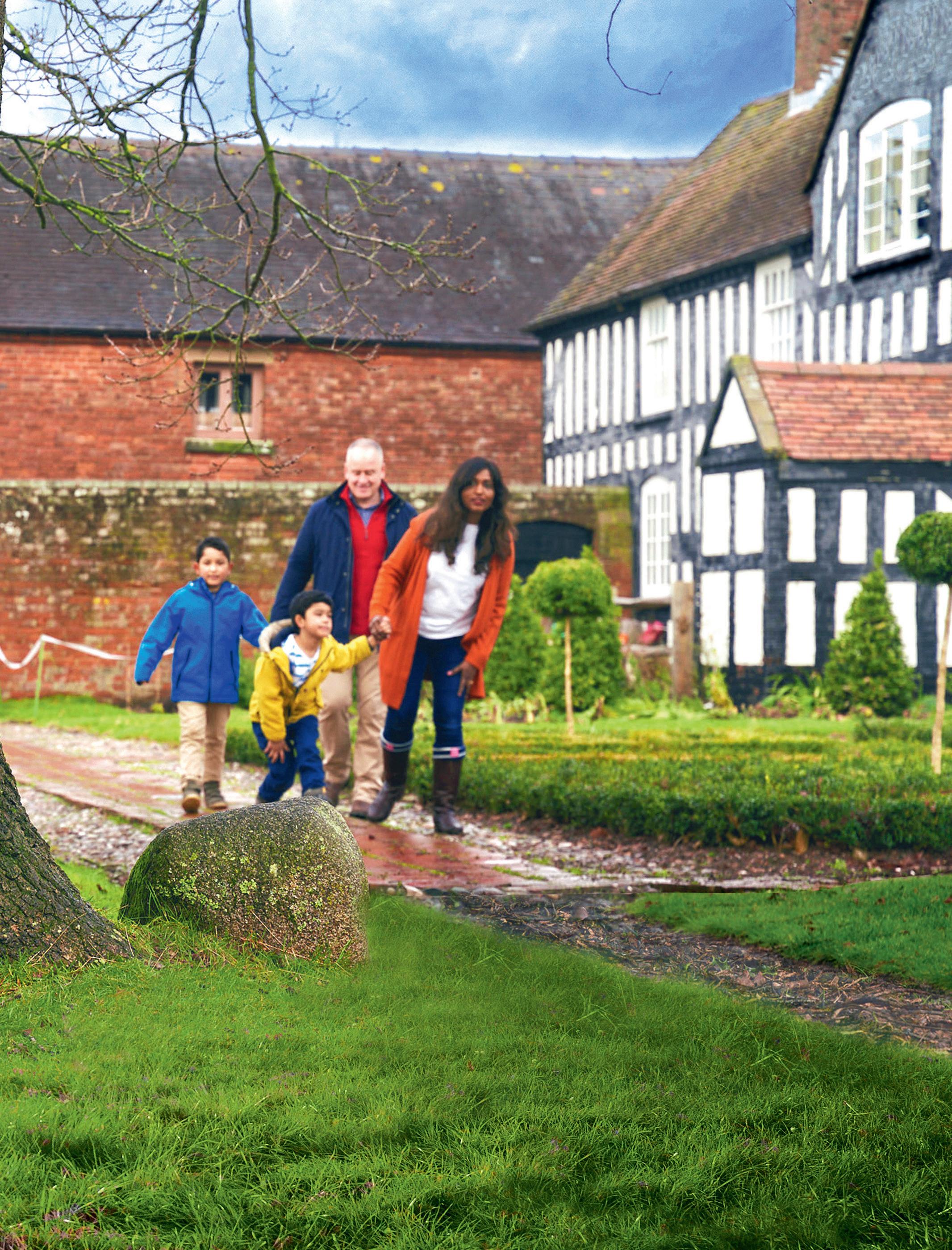
A major project
–
Tucked inside Shropshire’s eastern border, a short amble from the Staffordshire village of Bishops Wood, is a rural farmhouse that gave English history one of its greatest adventure stories.
Boscobel House and The Royal Oak includes a timber-framed Tudor cottage, a 17th-century hunting lodge and the red-brick outbuildings of a busy Victorian farm – all set against the backdrop of lush, open countryside.
It has long been a popular destination for families and history lovers alike, and now – following the completion of a major redevelopment project – Boscobel is sharing its secrets and the stories of those who lived
and worked here in new and innovative ways.
‘We always felt there was so much more potential to explore here,’ explains the site’s manager, Daisy Lambert. ‘Now, with this new investment, we’ve been able to make fantastic changes that really enhance people’s experiences.’
What has always marked Boscobel out as being particularly special, however, is its role in one of the greatest escapes in the nation’s history. On 6 September 1651, the house received a visit from the future King Charles II. Yet this was no ordinary stay, marked by fanfare or lavish pageantry. Two-and-a-half years earlier, Charles’s father – King Charles I – had been executed by Parliament following a bloody civil war, and the country had been turned into a republic.
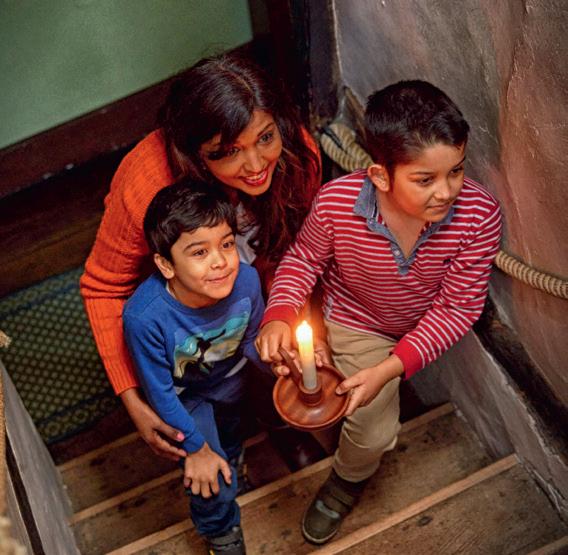
Determined to assert his divine right to rule, the younger Charles made his way out of exile in Scotland and launched an invasion of England. But after succumbing to defeat at the battle of Worcester, the 21-year-old royal found himself on the run, desperately trying to evade Oliver Cromwell’s Parliamentarian forces – and certain death. With the help of the Royalist sympathisers who lived at Boscobel, Charles was kept fed, watered and hidden overnight, before continuing his successful escape to France.
It was in the grounds of Boscobel House that the king also spent 14 long hours concealed within the branches of a tall oak tree, while enemy troops combed through the woodland below. In the words of historian Ronald Hutton, it’s a tale that has ‘all the classic trappings of a legend’.
The prospect of being able to share Charles’s adventure story with new audiences, both young and old, has been one of the driving factors behind the rejuvenation of this Shropshire landmark. Indeed, English Heritage’s project team decided early on that a substantial part of the revamped visitor experience should revolve around the central theme of ‘hide and seek’.
Nowhere is this concept more clearly reflected than within the house itself. Upon entering, visitors are presented with an electronic ‘candle’ – a hand-held device that not only lights up their surroundings but interacts with objects as they make their way around the building. By placing the candle on designated trigger points, visitors can see and hear hidden messages, imparting information about the house and its occupants.
‘It’s a whole new interpretation scheme,’ says national project manager Tracy Simmons.
‘Although there will be costumed volunteers on site, the candles allow visitors to explore the house at their own pace, seeking out secrets as they move from room to room.’
There is also another key aspect of the ‘hide and seek’ theme that becomes apparent once visitors climb up into the attic. The main portion of Boscobel House was built in the 1630s, ostensibly as a hunting lodge. But it had another, more secret purpose. It was built by the Roman Catholic Giffard family, who refused to adopt the Anglican faith.
‘The lodge was built with the intention of hiding Catholics who needed to seek refuge,’ says Lambert. ‘As such, several “priest holes” were built into the structure, which would have been used to conceal members of the clergy. There is still one surviving priest hole in the attic, which is where we believe Charles also hid during the night of 6 September 1651.’
The tiny hiding place, covered with a glass panel, is illuminated to show exactly just how snug it would have been – not least for Charles, whose
‘The king spent 14 long hours hiding in the branches of a tall oak tree’
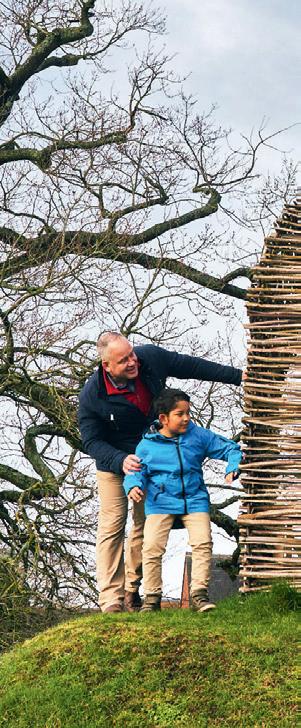
Clockwise from top left Electronic ‘candles’ will reveal information about Boscobel’s history as visitors make their way around the house; Charles is said to have spent time reading in an arbour on this mound; the garden has been restored to its 17th-century appearance


6ft 2in frame would have made it a tight squeeze. ‘He would have needed to have been incredibly quiet – the slightest creak would have given him away,’ adds Simmons. ‘The floorboards would have also been laid back over the top of the hole, along with a rug or piece of furniture to disguise the fact there was something beneath.’
Despite the addition of new, high-tech exhibits, maintaining historical accuracy has been of paramount importance across the site. When visitors step out of the house and into the formal garden, for instance, they’re presented with a scene similar to the one that would have greeted Charles.
Thanks to the efforts of Boscobel’s gardens team, the flower beds have been restored to an authentic 17th-century appearance, complete with characteristic box hedging. Crucially, the beds have been filled with plants that would have been common in other parterre gardens of the period, such as paeonies and artemisias. ‘We’ve really tried to bring the original garden back to Boscobel,’ says head of landscape and gardens John Watkins. ‘We want visitors to see the same plants and experience the same kinds of smells and feelings Charles would have had while being here.’
From the garden, visitors are also treated to a wonderful view of the Royal Oak itself. It is arguably the most important supporting cast member in Boscobel’s Civil War story, although the tree that now stands to the south of the house is, in fact, a descendant of the specimen in which the king spent that September day.
Following the collapse of the English republic and Charles’s accession to the throne in 1660, the tale of the Royal Oak became common knowledge, and visitors were soon travelling to Shropshire to
What to look out for during a visit to Boscobel House and The Royal Oak

BY CANDLELIGHT
Any tour of Boscobel should start inside the house, where one of the most important changes has been the addition of a new interpretation scheme, allowing visitors to guide themselves using an electronic ‘candle’ device. The experience continues in a trio of rooms above the dairy, which contain an interactive exhibition telling the intriguing story of the English Civil War.
Moving outside, staff and volunteers have restored the formal garden to its 17th-century appearance, aided by archival sources such as engravings and plant catalogues. Crucially, they have also built a more historically accurate version of the garden’s ‘pretty arbour’, in which Charles II is said to have spent time reading poetry.


From the garden, visitors follow a circular route down to the Royal Oak, which is accompanied by dozens of newly planted saplings – some of which have been propagated from the famous tree. And, if visitors fancy stretching their legs further, they can follow a trail that takes them to the ruins of White Ladies Priory, where the king spent the night before decamping to Boscobel.
Back up towards the house, the 19thcentury farm buildings now feature improved agricultural exhibits, while animals, including Coloured Ryeland sheep and Tamworth pigs, will also be introduced to the site. There are longer-term hopes to reinstate aspects of the working farm, including harvesting apples from the orchard to make cider using the original apple press, and making cheese in the dairy.


Continuing the overarching ‘hide and seek’ theme, a new children’s play area has been installed, complete with replica priest holes. Younger visitors are also likely to enjoy letting off steam inside the 28 metre-long willow tunnel, which snakes through a field next to the garden. Nearby, Boscobel’s café has also been given a makeover and brought under English Heritage’s management.
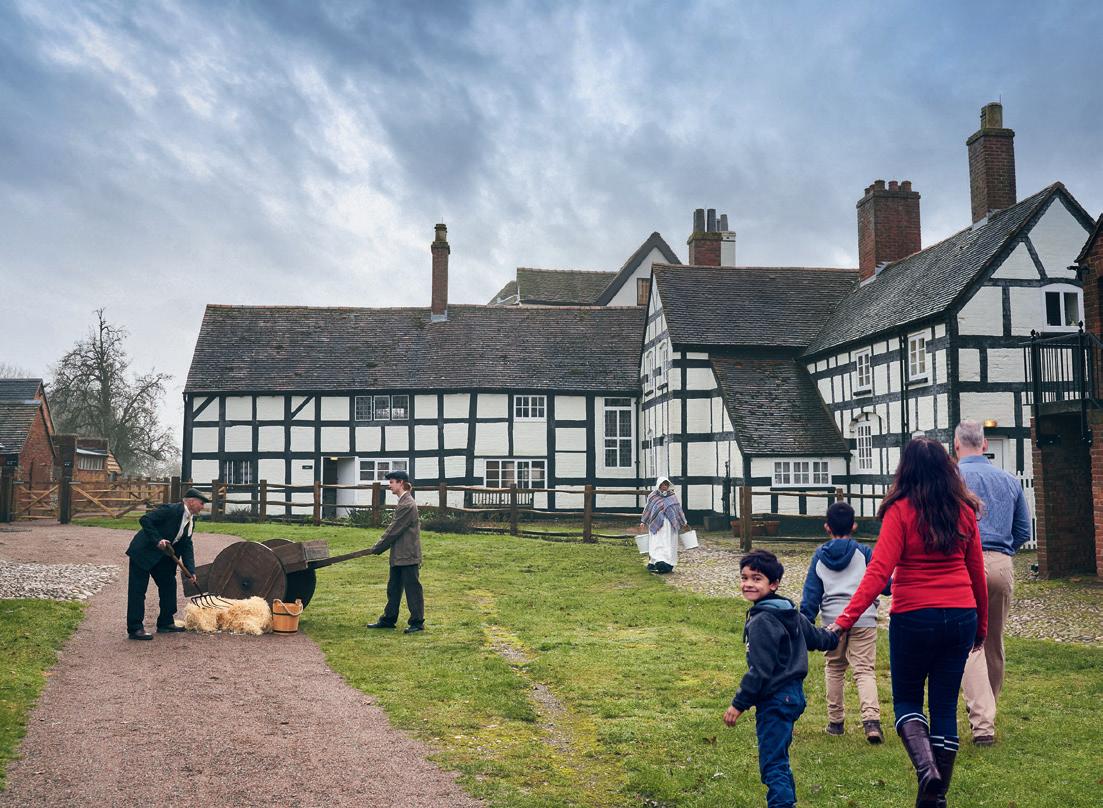
see it for themselves. Unfortunately, the pilgrims also had the unwelcome habit of lopping off chunks to take home as souvenirs, meaning it had virtually disappeared by the 18th century.
Despite this, the current Royal Oak – a sapling grown from the original tree – still cuts a commanding figure. And whereas the tree stood in an empty pasture up until recently, the gardens team has now planted several dozen new oaks surrounding it, meaning the site will eventually resemble the woodland that enveloped Boscobel in the 1600s. ‘A lot of visitors used to come and say, “Why couldn’t the parliamentarians find him? There’s only one tree in the field!”’ laughs Lambert. ‘By planting these new trees, we’re trying to get that old feel back.’
Following the Civil War, Boscobel House passed through numerous hands, before being purchased in 1812 by a Derbyshire industrialist named Walter Evans. According to Lambert, the Evans family ‘loved’ Boscobel’s connection to the Charles II story, and were keen to reflect this in the house’s interiors. ‘There’s a beautiful engraving above the fireplace showing scenes of Charles at Boscobel,’ she says. But the Evans era is significant in its own right. Throughout the 19th century, Boscobel was home to a bustling farmyard, complete with a large team of staff. The Evans clan also added an extension to the hunting lodge and earlier Tudor cottage, along with stables and a smithy.
A crucial step towards restoring the farm complex to its Victorian glory has involved drafting in some noisy new tenants – namely pigs, sheep, chickens and ducks. To prepare for their arrival,
was
in about 1632 as a hunting lodge, which could also provide shelter for Catholic priests fleeing persecution Below The rectangular parterre beds are typical of 17th-century formal gardens
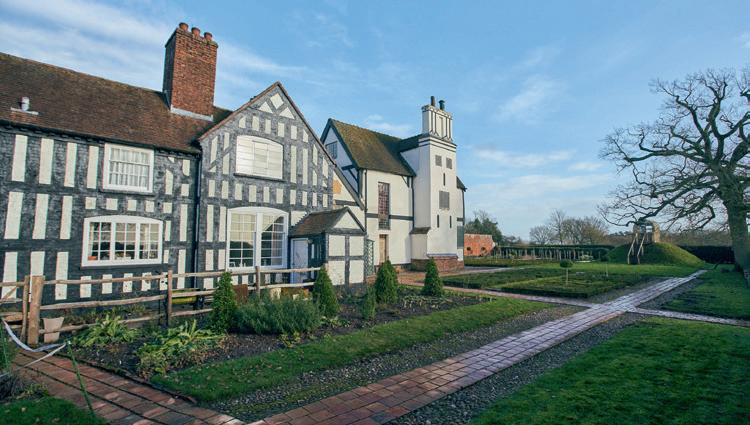
the farm’s outbuildings were refurbished, and one was converted into a pigsty.
While breathing fresh life into Boscobel House and The Royal Oak has involved a lot of work from English Heritage staff and volunteers, their efforts have certainly been worthwhile. ‘It’s so rewarding to be able to hand it over and let people explore the exciting stories we have to tell,’ says Simmons.
Just like Charles II, visitors will be able to leave Boscobel with memories of warm hospitality and stunning scenery – but thankfully without Cromwell’s army hot on their heels.
DISCOVER MORE
To learn more about Boscobel or plan a visit, go to www.english-heritage.org.uk/boscobel. To find out about volunteering opportunities, go to www.english-heritage.org.uk/volunteer


Repairing a medieval stone wall is a tricky task at the best of times. It requires meticulous care, years of experience and specialist knowledge of all sorts of historic materials and techniques. But when that wall stands atop a steep bank that descends into a deep defensive ditch, you know that the conservators tasked with scaling them are going to have their work cut out.
That’s the situation at Dover Castle in Kent, where a £1.7 million programme of repair works to the northern perimeter wall and towers is due to begin this year. ‘It’s been generations since there was any serious conservation work in many parts of the castle,’ says senior properties curator Roy Porter. Vegetation growth and weathering have led to degradation of both stone and mortar along the section of the wall from Constable’s Gate to Avranches Tower, plus there’s damage caused by 20th-century repairs to contend with.
Accessing these hard-to-reach areas will most likely be via a combination of scaffolding – probably suspended from the top of the wall – and contractors working on ropes, explains Porter. ‘What visitors should be able to see when this project is on site is quite exciting. It will be a showcase for how
we approach these projects, both in terms of following best practice in the work we’re doing to the fabric itself, but also in the way we achieve it to get best value for money.’
Whereas in the past, says Porter, ‘there was a sense that conservation was almost a thing you hid away because there was a fear that it might spoil the visitor experience’, the opposite is now true, with opportunities being created to celebrate the work and show visitors how their support is playing a vital role in safeguarding these properties for the future.
Protecting the palace
It’s a similar situation at Lincoln Medieval Bishops’ Palace in Lincolnshire, another property scheduled to receive large-scale masonry repair work this spring. The danger of falling masonry makes it impossible to open the whole site to the general public until the repairs are complete, but there will be hard-hat tours taking place during the £2.5 million project.
Essential repairs to the palace, some parts of which pre-date nearby Lincoln Cathedral, involve stabilising limestone that’s been damaged by a combination of frost, vegetation and water ingress.
‘If we don’t do the work now, the site will stay closed and the degradation would be much greater,’

In the wake of the coronavirus outbreak, our resources have never been more stretched. But with your support as Members we’re able to continue critical work to safeguard the sites in our care. Here are five of the essential conservation projects our teams are undertaking over the coming months
WORDS JO CAIRD
says project manager Ronald Blakely. The site’s decorative masonry – detailing on areas such as archways and columns – is particularly vulnerable and at risk of being lost altogether.
The project team is adopting a pragmatic approach to selecting suitable repair methods. This includes the decision to seal the tops of walls across the site in different ways depending on the circumstances. ‘We’re trying to achieve sustainable conservation,’ says Blakely. ‘We do, say, a hard capping – lead, stone tiles or slabs – at height and then soft capping – a turf system that sits on top like a cushion – at lower levels so it can be maintained.’
Masonry falling from degrading walls is also a risk at Bristol’s 14th-century Temple Church, which has lain empty since being bombed during the Second World War but has deteriorated in recent years, exacerbated by people trespassing. Although the church is closed to visitors for safety reasons, this hasn’t deterred people from accessing the site.
‘Each time they climb in we lose building fabric,’ says project manager Tracy Simmons. ‘We’ve boarded up some of the windows to try to prevent people coming in, but they find other ways and sometimes you make matters worse by doing that.’
An 18-month project costing £1.3 million will now conserve the damaged and fragile stonework
Below, from left A £1.3 million project will secure the 14th-century walls of Bristol’s Temple Church, which was bombed during the Second World War; a conservation project at Marble Hill House will reunite the house and historic landscape, in addition to improving facilities across the park
throughout the church, which was originally built by the Knights Templar in the 12th century before before being rebuilt as a parish church more than two centuries later. Bristol’s Architecture Centre is leading a consultation to help decide how the church can be reopened to the public.
Whatever the reopened Temple Church becomes, it will be plugged into local Bristol life, says Simmons. ‘This site is never going to generate a lot of income for English Heritage but it’s part of our responsibility as guardians to look after this building and open it up for other people to enjoy.’
Of course, it’s not enough just to reopen properties. As in Bristol, careful consideration needs to take place to ensure that everyone is made to feel welcome, from English Heritage Members to local residents. Marble Hill House in west London is a case in point. Built in the 1720s by Henrietta Howard, mistress of King George II, the villa sits within 66 acres of busy public parkland, encompassing tennis courts, sports pitches and an adventure playground.
‘We really wanted to bring the house and the landscape back together so that people could see the two in relationship to each other,’ says senior national project manager Reuben Briggs. ‘That will draw park users into the property.’
‘The reopened Temple Church will be plugged into local Bristol life’

The £6 million project – which has been partfunded by the National Lottery Heritage Fund (NLHF) – began in autumn 2019. This spring it enters its final phase with an extensive programme of work to the house, which will be redecorated inside and out. The roof is being repaired, and new heating, drainage and wiring will be installed. A new lift will also be put in to improve access to the first floor.
Time is very much of the essence, says Briggs. ‘Without doing this work we couldn’t have assured the environmental conditions in the house. It was a real risk to both the property and its collection.’
Completing the project will not be straightforward. The way the floorboards were constructed means they need to be lifted slowly

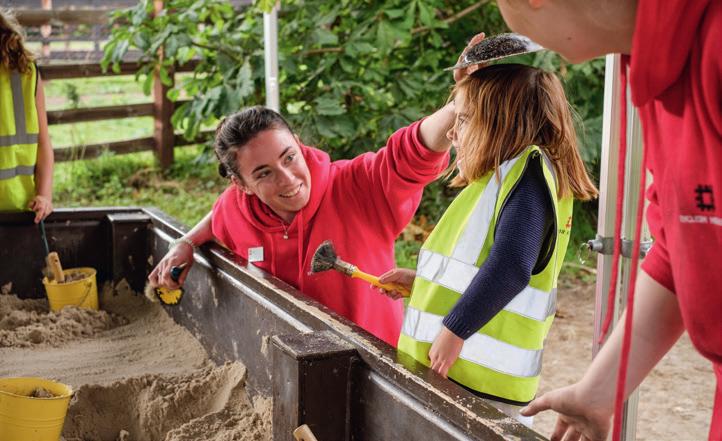
CONSERVATION CAMPER LOOK OUT FOR OUR NEW
Providing opportunities to see conservation in action has become an integral part of the experience of visiting English Heritage sites in recent years. Interpretation boards, viewing platforms and hard-hat tours have all helped to highlight the processes behind interventions such as masonry repairs or bridge repainting.
This summer and autumn, visitors will be able to enjoy an even greater insight into this work thanks to the Conservation Camper, a touring pop-up workshop space supported by Sir Robert McAlpine and designed with families in mind.
Visitors to sites undergoing conservation this year, including Marble Hill House, Dover Castle and Belsay Hall, Castle and Gardens, can learn about stone repair, landscape
archaeology, ecological conservation and preventative conservation via open-air workshops that can be booked on the day.
These will mirror the ongoing conservation work at each property, with visitors able to take part in hands-on activities such as printmaking, stone carving and designing your own landscape. Each of the six available workshops will have options that appeal to different age groups, including very young children, to ensure everyone enjoys a memorable experience. Many activities will also have a take-home component, provding a unique memento of a visit.
To discover the Conservation Camper’s latest travel plans, go to www.english-heritage.org.uk/learn/ conservation
and carefully to access the spaces underneath. Added to this, there’s the challenge of removing asbestos that was installed in the 1960s, with the conservators required to complete their delicate work in cumbersome protective gear.
However, the end will undoubtedly justify the means. Not only will it safeguard Marble Hill for future generations, it will also pave the way for an ambitious reinterpretation of the property that puts Henrietta Howard at its heart. ‘It was her creation, so we wanted to put it back into her period to better tell her story,’ says Briggs.
The tools for conjuring up the atmosphere of a particular period differ widely depending on the property. At Marble Hill, researchers have
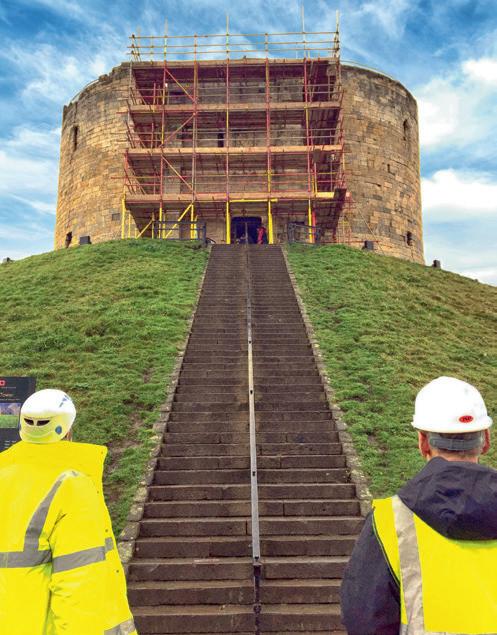
painstakingly analysed paint samples with the aim to reinstate the colours that Henrietta Howard would have recognised over 250 years ago.
At York’s Clifford’s Tower, there are much more visible, larger scale interventions occurring. As well as extensive and vital masonry repair to the tower’s 13th-century shell, the project will also see the addition of a modern timber platform that will, in the words of senior national project manager Rachael Baldwin, ‘create the feel of a castle’. The platform, which promises to afford visitors unrivalled views over the city, will be accessed via a new floating staircase and walkway, providing a much-improved visitor experience. ‘You’ll still be able to see the history of the tower and how time has treated it over the years,’ adds Baldwin.
Top right Clifford’s Tower in York will receive essential masonry repairs and benefit from the addition of a roof-top viewing platform, offering unrivalled views over the historic city centre
If all that didn’t sound ambitious enough, consider the fact that before constructing the concrete raft on which the staircase and platform will sit, archaeologists will need to excavate to a depth of one metre beneath the stone flags of the tower to ensure that nothing of significance is missed. Furthermore, all this work, including high-level masonry repair, will be taking place in the open air, exposed to the elements and the public gaze in the very heart of York’s historic centre.
Baldwin is undaunted. ‘It’s a major investment in one of our top sites in the country. It’s a real opportunity to make our mark in this century for something that’s been there for nearly 1,000 years.’
SUPPORT OUR CRITICAL WORK
To make a donation to our sustainable conservation appeal, go to www.english-heritage.org.uk/ sustainableconservation
From St Hild to Dido Belle, many influential and remarkable women through history have called our historic properties home. Our experts share the stories of eight of those who challenged the conventions of their day
ILLUSTRATIONS JOE M c LAREN

Many remarkable women have lived and worked at our historic sites.
From rebellious royals to visionary builders, and from gardeners to governesses, we’re sharing some of their stories to mark Women’s History Month, which is celebrated in March each year. We are fortunate to care for a number of properties that have been shaped, defined by, or owe their very existence to the women who called them home. These are the stories of just a small selection of those who made history while living at our houses, abbeys and castles. But this is not just a celebration of the rich and powerful. Read on to discover some of the unsung working women who made their own contribution to the stories of our sites.

BY SENIOR PROPERTIES HISTORIAN MEGAN LEYLAND
Henrietta Howard was a remarkable figure in the Georgian court and member of a vibrant circle of writers, poets and politicians. One of her greatest achievements was the building of her home, Marble Hill, in the 1720s. This was a long sought-after retreat for Howard following a difficult early life and decades navigating the royal court as a servant to Caroline, Princess of Wales, and mistress to George, Prince of Wales (later George II). Her home was a textbook example of Palladian architecture and was surrounded by a peaceful pleasure garden. Here, she forged a new, happier life and entertained on a scale which was said to rival the royal court.
BY SENIOR PROPERTIES HISTORIAN STEVEN BRINDLE
Eleanor, heiress to the vast French duchy of Aquitaine, married Louis VII of France in 1137. Her marriage was turbulent and she was granted an annulment by the Pope in 1152. Shortly after, she married Henry of Anjou, who succeeded as Henry II of England in 1154, and they had five sons and three daughters. Eleanor’s second marriage was equally troubled. In 1173, her eldest son Henry initiated a rebellion, encouraged by Eleanor. She was captured and spent 16 years imprisoned at Old Sarum. Upon the king’s death in 1189, she regained her freedom and played an influential role in the reigns of her sons until her death in 1204.
BY ACTING CURATOR LOUISE COOLING
Dido Elizabeth Belle was the illegitimate daughter of an enslaved African woman named Maria Belle and Sir John Lindsay, an officer in the British Royal Navy. She was raised by her great-uncle, William Murray, 1st Earl of Mansfield and his wife, Lady Elizabeth, at Kenwood. It was extremely unusual for a mixed-race child to be raised as part of an aristocratic British family at this time. Dido was brought up as a lady alongside her cousin Elizabeth Murray and enjoyed close relationships with her family. She was taught to read, write, play music and also supervised Kenwood’s dairy and poultry yard, which was a common hobby for genteel women at the time.

BY THERRON WELSTEAD
Little is known about Isabella de Fortibus until 1248 when she married William, Earl of Albemarle, at the age of 12. She inherited large tracts of land after William’s death in 1260. Her wealth then grew further when she inherited much of the land held by her brother Baldwin de Redvers, Earl of Devon, following his death two years later. After Baldwin’s death, Carisbrooke Castle on the Isle of the Wight became her principal residence and she had the interior and gardens of the castle remodelled to suit her status and needs. Throughout her life she was regularly involved in litigation, sometimes fighting several court cases at once. She died in 1293 at the age of 56, without a direct heir.
‘Isabella had the interior of Carisbrooke Castle rebuilt to suit her status and needs’

BY CURATOR OF COLLECTIONS
OLIVIA FRYMAN
The last member of one of England’s great medieval dynasties, Lady Anne Clifford became a celebrated figure in the history of northern England. When her father died, she expected to inherit his vast estates in Yorkshire and Westmorland but was excluded in favour of her uncle and his heirs. Anne spent the following 38 years fighting a legal battle to regain her estates but it was not until her cousin’s death in 1643 that her hopes were finally fulfilled. The last three decades of her life were spent gradually restoring her estates and repairing her five great castles, including Brough and Brougham, which survive today as ruins. Conscious of their antiquity, she took great pains to restore them in a style in keeping with their medieval origins.
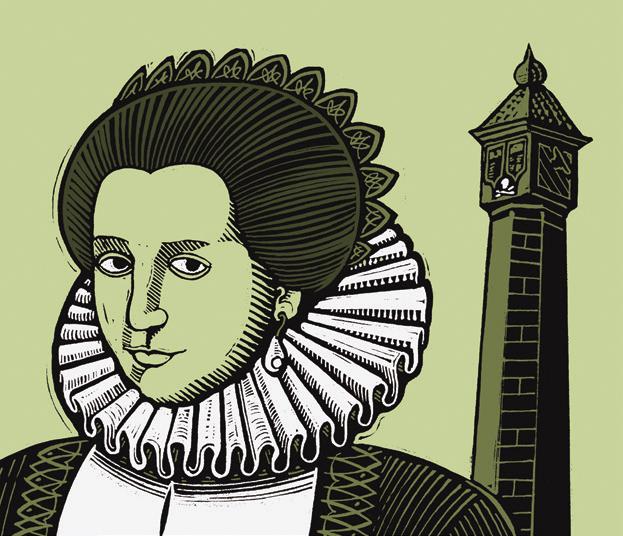
BY SENIOR PROPERTIES HISTORIAN
MICHAEL CARTER
Born a princess in 614, St Hild or Hilda can be counted among the greats of Anglo-Saxon Christianity. She lived at a time of religious dynamism and conversion. Aged 33 she decided to dedicate her life to God and become a nun. Eventually she founded (or possibly refounded) a monastery at Whitby. This was a so-called ‘dual house’ of both nuns and monks, with Hild at its head as abbess. The monastery rapidly prospered, with princes and paupers turning to Hild for her wise counsel. Hild’s monastery was the location in 664 for the Synod of Whitby, which was called to settle disputed aspects of Church custom, including the date of Easter. After she died in 680, Hild was venerated as a saint. Her feast, or holy day, is 17 November.
Introducing the unsung heroes who played their part in shaping the stories of our sites

Daphne Baker (1911–2003)
2nd Officer, Women’s Royal Naval Service, Dover Castle, Kent
Daphne joined the Wrens in September 1939 at the start of the Second World War. She served in the cipher office of the Royal Navy headquarters at Dover Castle, notably during the rescue of Allied soldiers from Dunkirk in May 1940. From June 1940 to September 1942, Daphne commanded a naval intelligence team. She was the first WRNS Special Duties (Y Service) officer. Her unit monitored German radio signals in the Channel, translated them and pinpointed the sources – vital information to protect Allied shipping.

Olive Buller (1893–1982)
Nurse at Wrest Park, Bedfordshire
Olive Buller arrived at Wrest Park Military Hospital in 1915 as a probationer aged 21. She was one of around 20 nurses responsible for caring for around 180 First World War Tommies who filled the three wards. Many of these were suffering from gunshot wounds or amputations as a result of the conflict. Olive left Wrest when the hospital closed in 1916 and qualified as a nurse in 1921 at King’s Hospital, London. She then worked for two years as a sister at Baghdad General Hospital in Iraq, where smallpox and dengue fever were common.



Emily Smith (dates unknown)
Press girl, JW Evans Silver Factory, Birmingham
Fly press operators (or press girls) played a key role at the JW Evans Silver Factory, using the machinery to cut out the pressed pieces to make into jewellery, candlesticks and other trinkets. Even in the 1970s, Emily Smith continued the tradition of working in dusty rooms filled with pressings, while the floors shook to the crash of the drop stamps operating below. This would have all looked very familiar to Mary Ann Stubbs, who started working at the factory in 1881. She was only paid about half the wage of the male stampers as her work was regarded as semi-skilled labour.
Christine Falwasser (1905–81)
Deputy head gardener at Eltham Palace, London
The Second World War opened up new opportunities and roles for millions of women, including Christine Falwasser. Christine was promoted to deputy head gardener at Eltham Palace in 1940. She was a Cambridge history graduate and had worked at Kew Gardens as one of the few women gardeners. Her privileged position meant that she was often invited to dinner by the Courtaulds, the owners of Eltham Palace and – according to a house guest – was very good company.
Emily Chester (1898–1983) Cook and housekeeper at Brodsworth Hall, South Yorkshire
Emily Chester started at Brodsworth as a garden girl and then became kitchen maid, cook and, in 1936, cook-housekeeper, a position that she held for nearly 50 years. She never married and only retired in 1981 due to ill health. By this time, she was the only member of live-in staff, supported by daily cleaning ladies and temporary butlers (none of whom stayed long). Emily demonstrated great loyalty to and respect for the owner of Brodsworth, Sylvia Grant-Dalton, who she always referred to as ‘madam’. Many former servants remember Emily as an excellent cook, preparing Christmas dinner for 20 people even when in her 70s.

Mary Dormer (1791–1883) Governess at Audley End House, Essex
Mary Dormer was governess to the seven children of Richard Neville, 3rd Lord Braybrooke, and his wife Jane, at Audley End in Essex from the mid-1830s. She would have been responsible for the education of the boys until they left for Eton at the age of 10 or 11, and the girls until they reached adulthood. It was a difficult job that required learning, self-restraint and an ability to maintain discipline. Miss Dormer appears to have had all these qualities in abundance as she remained with the family into the 1850s, by which time the children were grown-up.

Dorothy Liddell (1890–1938) Archaeologist at Avebury, Wiltshire
Between 1925 and 1929, Dorothy Liddell supervised excavations at Windmill Hill, a Neolithic enclosure near Avebury. She was a self-taught archaeologist – her brotherin-law Alexander Keiller was leading the project and she proved to be a meticulous excavator. One of Liddell’s key discoveries was that the patterns on pottery from the site had been created using small bird bones. She later excavated Roman and Iron Age sites near her home in Hampshire, and directed excavations at Hembury Iron Age hill fort in Devon, where she discovered a Neolithic enclosure. When Keiller opened the museum at Avebury shortly after Liddell’s death, he spoke of it as a tribute to her work.
BY SENIOR PROPERTIES
HISTORIAN PAUL PATTISON
Lady Hester Stanhope came to prominence at the same time as her uncle, William Pitt the Younger, who became prime minister for a second time in 1804. As his social hostess at Downing Street, Walmer Castle and elsewhere, Lady Hester mixed with the high and mighty of society. In 1810, she left England to travel in the eastern Mediterranean and Middle East, settling near Sidon (modern Lebanon) in 1814, where she adopted Ottoman ways. She made a great impact on the Druze people and on the Hasana Bedouin, who had no parallel for such an intrepid woman who helped them, did as she pleased, and excelled in a male-dominated culture where women had to be silent. In later life she became reclusive, and died alone in 1839.


BY CURATOR OF COLLECTIONS AND INTERIORS (SOUTH EAST) KATHRYN BEDFORD
Eleanor de Montfort, the sister of Henry III and wife of the baronial leader Simon de Montfort, took an active part in the Second Barons’ War (1264–67), networking with supporters and keeping prisoners. When both her husband and eldest son were killed at the Battle of Evesham, she continued to hold Dover Castle for nearly three months. She was eventually forced into exile, but not before she had transported her surviving family and wealth to safety abroad. Eleanor became a nun at Montargis Abbey, 70 miles south of Paris, and died there in 1275.
GET INSPIRED
To discover more stories of women’s history at our sites, go to www.english-heritage.org.uk/women-in-history


WORDS MARTIN ALLFREY
PHOTOGRAPH JOBY SESSIONS
Spanning from c.2300 BC until c.800 BC, the Bronze Age was a time of social change and technological advances. With a gradual move away from the stone tools of the Neolithic period, the Bronze Age saw the introduction of new pottery styles, advances in agriculture and the development of sophisticated metal-working technology. This beautifully crafted axe head, which dates to the late Bronze Age (c.900–700 BC), was found during excavations at Beeston Castle in Cheshire. The site, located on a rocky outcrop high above the Cheshire Plain, was once a fortified Bronze Age settlement. It was home to highly skilled metalworkers who used locally available copper, alloyed with other metals traded from further afield, to produce tools and weapons. Scientific analysis of wear patterns suggests that bronze axes were used for cutting wood and they held symbolic and cultural value and were often deliberately buried, having had little or no use. Thanks to their apparent control over natural forces and seemingly magical techniques, smiths were revered and powerful members of prehistoric society.
LEARN MORE
To discover more about the history of Beeston Castle, go to www.english-heritage.org.uk/beeston
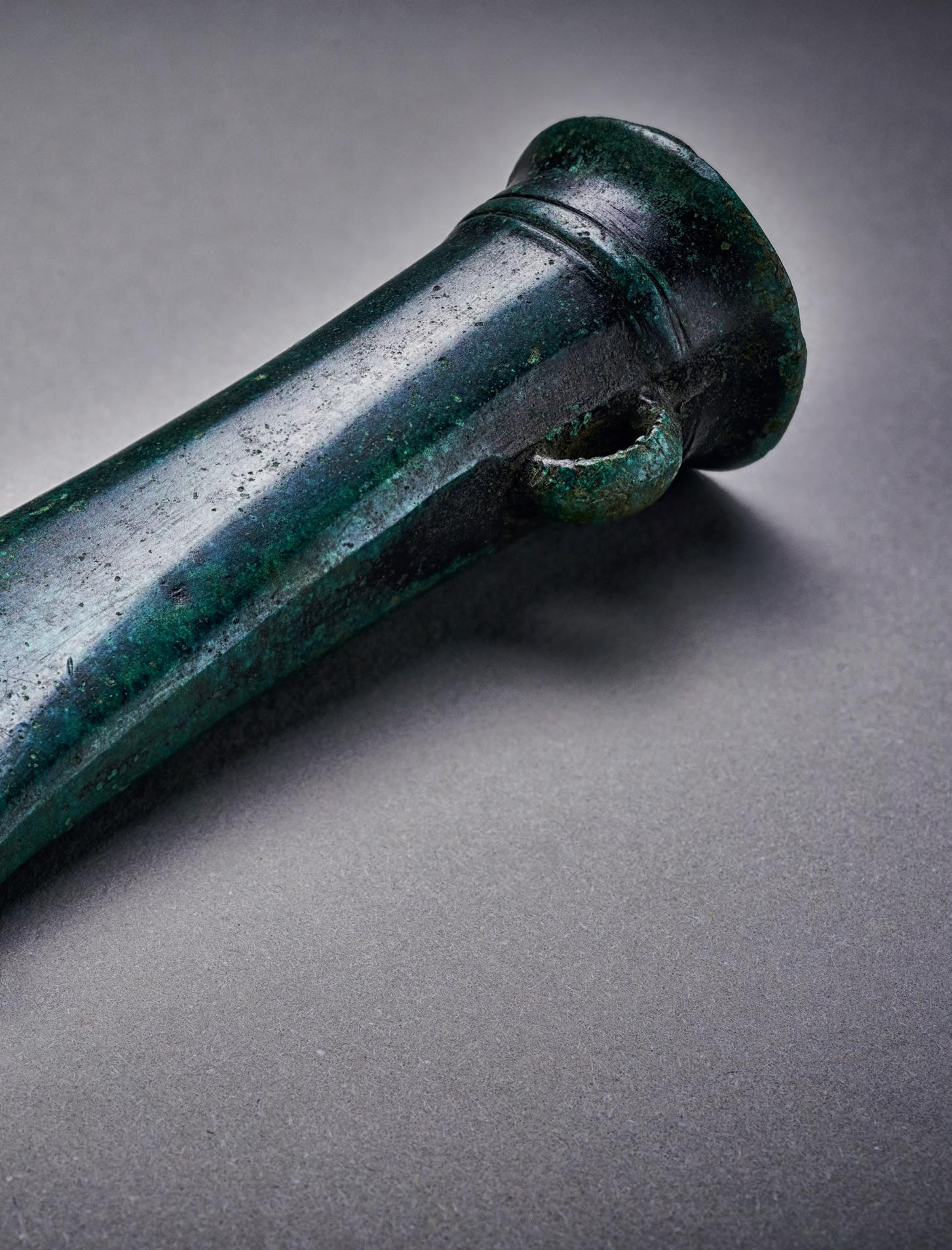
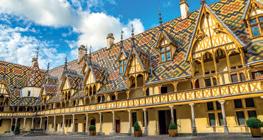

An eight day river voyage along the Saone aboard the Amadeus Provence with Guest Speaker Michael Hindley 12th to 19th May 2022






Travelling by river offers a marvellous opportunity to slowly absorb the villages, towns and passing countryside; the subtle changes of landscape, lifestyles and architecture can be appreciated fully, and nowhere is this more relevant than along the scenic French waterways. Come with us and enjoy this enchanting region of France well known for the good things in life: delicious food, fine wine, idyllic scenery and historic towns and villages that all make for an appealing and rewarding journey. Leave the crowded roads behind and relax on board our elegant river vessel as she cruises through Burgundy on an eight day journey along the River Saone.
Starting in France’s gastronomic capital, Lyon, this leisurely trip will concentrate on Burgundy and all its wonders. We will visit bucolic villages with well-preserved churches and monuments, discover the heritage of the Dukes of Burgundy, and explore historic castles and Medieval fortresses as well as the wine capital, Beaune, with its Hotel Dieu. Our programme combines excursions ashore with informative local guides as well as time at leisure, so you can truly relax and experience all that Burgundy has to offer.
Amadeus Provence
For our river cruise in Southern France we have chartered the elegant Amadeus Provence. Launched in 2017, she accommodates a maximum of 140 passengers in well-appointed, outside cabins. The cabins all have en-suite bathrooms and feature individual climate control, flat screen TV, a safety deposit box, generous closet space and a choice of bed configuration. Spread over four decks, the ship’s public spaces include a bar and lounge for socialising and relaxation as well as a fitness area and massage room. The stylish restaurant accommodates all guests in one sitting and serves delicious cuisine that will be freshly prepared for you each day. There is a spacious Sun Deck with a plunge pool and comfortable deck furniture. A daily briefing by the Cruise Director will provide you with information on the next day’s activities and expert guides will accompany you on the included excursions. In addition you will be accompanied by a Guest Speaker who will provide entertaining and informative talks.

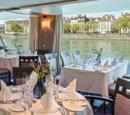


CRUISING WITH NOBLE
SPECIAL OFFER – SAVE £200 PER PERSON




Day 1 London to Lyon, France. Fly by scheduled flight to Lyon or travel by train from London St Pancras. Upon arrival transfer to the Amadeus Provence and embark. Meet your fellow travellers this evening during welcome drinks and dinner as we sail upstream along the River Saone.
Day 2 Macon & Cluny. Today we visit Cluny Abbey, once the most powerful Benedictine Abbey of the West. Built in the Romanesque style, it was founded by William I, Duke of Aquitaine in 910. The Abbey was renowned for its strict adherence to the Rule of St Benedict and is the place where the Benedictine Order was formed. Although most of the great Abbey of Cluny stands in ruins, the ruins still suggest the size and glory of the Abbey at its zenith. Return to the ship for lunch and enjoy an afternoon sailing.
Day 3 Beaune. From Seurre we travel to the principal town of the Cote d’Or and here we visit the world-famous 15th century Hospices de Beaune, with its remarkably decorated roof, gallery, kitchen and a well-preserved idea of how the beds would have looked in

the Grand Salle des Malades. Beaune is a blend of cobbled streets, Medieval half-timbered houses, flowered squares and gardens. After some free time to stroll through the alleys and old streets we return to the ship for lunch and an afternoon at leisure. Sail this evening during dinner.
Day 4 Dijon. Today’s excursion will take us to Burgundy’s capital and one of the most attractive French cities. Filled with elegant Medieval and Renaissance buildings, Dijon served as the capital of the Duchy of Burgundy from the 11th to 15th centuries. Visit the old town including the Palais des Ducs de Bourgogne with its 18th century Neoclassical façade, and the Chateau du Clos de Vougeot, a former Cistercian abbey and now the headquarters of Chevalier du Tastevin brotherhood. Return to our mooring at St. Jean de Losne for an afternoon at leisure.
Day 5 Tournus. Today we visit the charming town of Tournus. On a morning walking tour we will visit the Eglise St Philibert; this magnificent Romanesque church has an austere façade dating from the 10th century. Explore the rest of the town with its wealth of old buildings, alleyways and cafes. Set sail during lunch and enjoy a lecture on board.
Day 6 Lyon. Today begins with a guided tour of the old part of the city, including the amazingly decorated 19th century hilltop Basilica of Notre Dame. Take a walk through the ‘Halles de Lyon’, a famous food market where renowned chefs are often spotted selecting their ingredients. The afternoon is free to explore further independently. Sail south during dinner to Vienne.


Day 7 Vienne. On our morning walking tour of the town of Vienne, we will learn about its Roman era with a visit to the Temple of Augustus & Livia and the Roman theatre located in the centre of town. Also visit the RomanesqueGothic Cathedral St Maurice. Relax on board this afternoon, or enjoy some free time in this delightful spot before joining your fellow travellers for the farewell dinner this evening.
Day 8 Lyon to London. Disembark this morning and transfer to the airport for the return scheduled flight to London, or travel by train to London St Pancras.
Post-Cruise Annecy Extension 19th to 22nd May 2022
If you would like to spend some more time in France after disembarking the Amadeus Provence we are offering a three night extension in the charming city of Annecy. Full details can be viewed online at www.noble-caledonia.co.uk

Special offer prices per person based on double occupancy start from £2295 for a category C cabin.
Economy class scheduled air or train travel • Seven nights aboard the Amadeus Provence on a full board basis • House wine, draught beer and soft drinks with lunch and dinner on board • Shore excursions as described with use of Quietvox headphones • Cruise Director • Tour Manager
• Guest Speaker • Gratuities • Transfers.
NB. Ports & itinerary subject to change. Travel insurance is not included in the price. All special offers are subject to availability. Our current booking conditions apply to all reservations.


We meet the team behind an innovative new storytelling project at Bolsover Castle in Derbyshire, where theatrical costumes and interactive props are breathing life back into its colourful characters and stories


illiam and Margaret Cavendish certainly stood out from the 17th-century crowd. While William was a skilled horseman, musician and writer, and a great patron of the arts, his wife was even more noteworthy. Feminist and fashionista, poet and philosopher, she was not only the first woman to be admitted to the Royal Society, she also penned The Blazing World, a utopian novel cited as one of the earliest examples of science fiction.
William – the 1st Duke of Newcastle – and his partner were also consummate hosts, throwing lavish parties and masques at their aristocratic retreat of Bolsover Castle in Derbyshire. Dubbed the ‘play palace’ by historians, the fairy-tale Stuart mansion was designed for show, with its labyrinth of sumptuous rooms and remarkable wall paintings.

William and Margaret may have been many things, but dull and ordinary they were not.
All things considered, it seems likely this erudite and avant-garde couple would thoroughly approve of Bolsover Castle’s new storytelling experience, which is due to launch this spring. The project is centred around flamboyant costumed interpretation that will see volunteers dress up to represent the three key protagonists in the castle’s rich narrative – William, Margaret and the site itself, embodied by a character called The Storyteller.
‘We wanted to capture the spirit of the castle and its inhabitants,’ explains senior properties historian Megan Leyland. ‘There’s so much about them that is creative and imaginative – they had incredible flair. We wanted to bottle this and put it on costumes.’ Don’t imagine that these will be your traditional period costumes. In their respective
roles, the volunteers will be encouraging visitors of all ages to engage with Bolsover’s fascinating history by regaling them with stories and anecdotes – and their clothing has been specially designed to help facilitate this.
Part-1600s, part-fantastical, each sartorial creation has myriad multi-layered details, including illustrated narratives, quotations and drawings of the castle’s wall paintings incorporated into the textile design, as well as detachable pieces of clothing and props – all intended to help the wearer bring the castle and its inhabitants to life.
‘Storytelling is a big part of what we do,’ says Heather Redmond, head of on-site visitor experience. ‘But rather than being a standard interpretation panel with script on it, the costumed interpretation will help unlock Bolsover’s secret gems and unique stories that visitors wouldn’t necessarily have got from the site previously.
‘It’s about giving people a sense that there’s more to the castle than bricks and mortar – it’s the human stories that we can bring to life. The fact we actually have these stories on the costumes really serves to set it apart.’
The costumed interpretation will also enable the volunteer to be flexible in terms of location. ‘To have them move around the castle and grounds and peek out at any given opportunity is exciting,’ adds Redmond. ‘The idea is that we can flex and adapt according to what the visitor is interested in.’
‘This is a different type of storytelling,’ agrees Leyland. ‘It’s neither a lecture nor a walking tour. It’s moments of personality and character, spoken through the voice of the volunteer. We’d like people to go away feeling inspired and with a better understanding of Bolsover.’
It’s a lot to expect of a costume: to communicate the castle’s past and its charismatic personalities, as

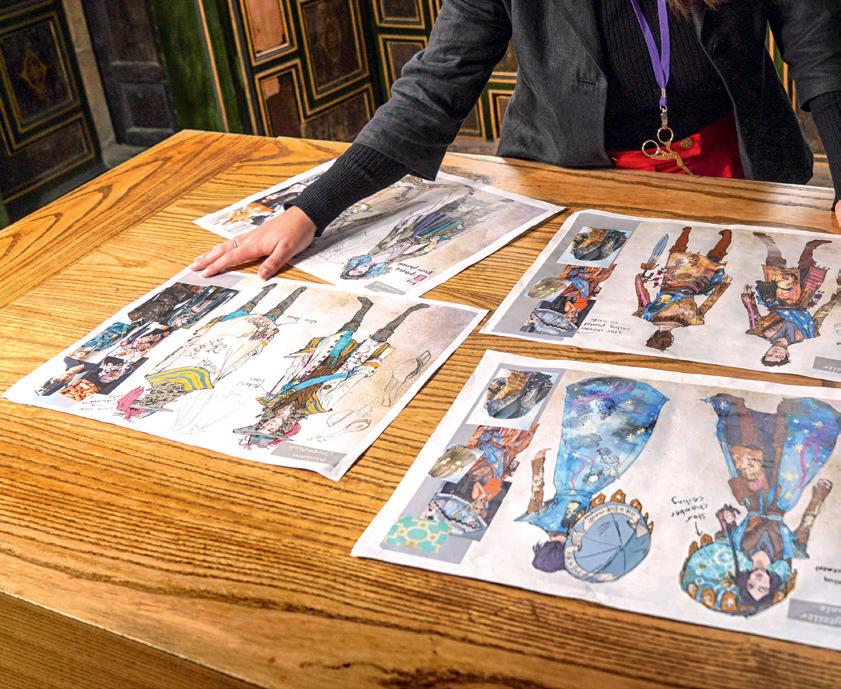
‘We wanted to capture the spirit of the castle and its inhabitants. They had incredible flair’

well as prompt conversations between visitor and volunteer. But costume designers and makers Sophie Fretwell and Hannah Gilbert have fulfilled the brief.
Months in the making, the detail in each of the three outfits is extraordinary, from the colour palette – turquoise and parchment tones ‘to give that historical feel and reference William and Margaret’s literary connections,’ explains Fretwell – to the choice of materials and silhouettes.
‘Every fabric swatch, every button, I’ve gone over obsessively. We don’t just want people to say, “Oh, it’s a beautiful costume.” We designed each one with lots of detail and layers so it’s interactive and the volunteers have plenty to talk about.’
Take Margaret, for example. ‘She’s quite a trailblazer and a feminist. I wanted to mix masculine and feminine elements, so I gave her male hose as well as a bodice, while her coat has feathered quill sleeves as a reference to her writing.’

Built by Sir Charles Cavendish in the early 17th century and finessed by his son William, the Little Castle was designed to impress, with its medieval-style architecture and opulent interiors. Many rooms are decorated with wall art and painted ceilings, with images from popular culture, the Bible and Greek legends.
The huge Terrace Range, overlooking the Vale of Scarsdale, may now be a roofless shell. But when William built this series of vast state and banqueting rooms – including a long gallery and grand dining room – they would have been used for entertainment on a lavish scale, most notably in 1634 when Charles I and Queen Henrietta Maria came to stay.
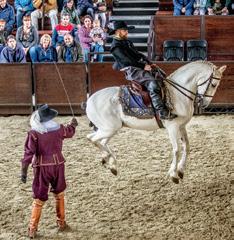

William was a renowned equestrian and he built the magnificent Riding House – one of the earliest in England to survive in its entirety – as a place to indulge his passion for manège (the training of horses). The interactive exhibition here is a great introduction to the site for young visitors, who will also love watching the regular riding demonstrations.
Our wooden outdoor play area has swings, a slide and wooden battlements and towers – just like a mini Bolsover Castle. There are also plenty of grassy areas for a run around. Situated next to the café, it’s the ideal place to take some time out. Time your visit right and you may also catch one of our family events, from clashes of medieval knights to our fun explorer quests.


The crenellated wall walk circumnavigates the perimeter of the Fountain Garden, allowing visitors a bird’s-eye view of the immaculate garden and Venus fountain. Stroll along the circular walls and you’ll also be rewarded with sweeping views over the Vale of Scarsdale, perfect for a family game of I spy. Watch out for the steep steps at the end.

William, on the other hand, is in a military, cavalier-style cape – a sartorial nod to the Civil War when he fought as a Royalist. This is complemented by a faux leather doublet or ‘17th-century activewear’ as Fretwell describes it, in recognition of his passion for manège (the training of horses), which he indulged in the Riding House he built at Bolsover on his return from exile following the Restoration.
Wall paintings
Even the accessories have been carefully thought through, from William’s wig, which is made out of wine corks to reflect his love of carousing – he threw an extravagant party in 1634 in honour of Charles I and Henrietta Maria – to Margaret’s hat, with its planet rings and stars made of marble, metals and crystals, all mentioned in The Blazing World.
There’s even a replica of the book, out of which the volunteer can make finger puppets pop up, each one portraying a creature from Margaret’s groundbreaking work.
But it is The Storyteller’s costume that is perhaps the most intriguing, designed to be worn by a male or female volunteer based in the Little Castle, the lavishly decorated hub of Bolsover. They’ll help visitors explore the meanings of the wall paintings in the building, which are some of the finest and best-preserved in the country.
Completed in 1621, the symbolic paintings contain images and stories from popular culture, the Bible, Greek myths and legends, and other allegorical subjects – all commissioned by William to demonstrate his intelligence and taste. It’s challenging to do justice to them, but The Storyteller’s full-length robe, hand-dyed in a deep blue to mirror the celestial heavens painted on the walls and ceiling in the ducal chambers, is an excellent starting point.
‘The costumed interpretation will help unlock Bolsover’s secret gems and unique stories’


LISTEN TO OUR PODCAST EPISODE ON THE PROJECT www.english-heritage.org. uk/podcast
A quotation selected to become part of Margaret Cavendish’s costume
The sweeping garment is also the perfect canvas on which to showcase the specially commissioned illustrations by Mel Northover of Northover & Brown, which have been screen-printed on all three of the costumes to further encapsulate the castle’s story and act as a conversational starting point.
‘I wanted the illustrations to not only be intriguing and pique interest, prompting adults and children to ask questions, but for the visitor to be amused and to wonder at them. They need to convey a sense of magic,’ says Northover.
The details and nuances in Northover’s drawings are exquisite, not least when it comes to the range of illustrations adorning The Storyteller’s costume. There’s Hercules, symbolising William Cavendish, with his horse; the prophet Aaron, to highlight the Biblical theme; and Greek god Bacchus, contentedly eating grapes, to demonstrate how the Little Castle was a place of pleasure.
Northover’s skill at storytelling is also evident in Margaret and William’s ensembles, whether it’s an illustration of our knowledge-hungry heroine leaning forwards to watch a science experiment or William standing on a pile of books, a laurel leaf crown being lowered on to his head by cherubs, to represent him as a thinker of the day.
Perhaps most impressive is Northover’s drawing of Margaret marching up the steps of the Royal Society in all her finery, with crowds watching on and her ladies-in-waiting scurrying behind, all silhouetted to highlight her significance. ‘I was trying to get across that bold confidence and individuality,’ she explains.
Every drawing is imbued with a lightness of touch. ‘The illustrations are meant to be full of joy,’ she concludes. ‘From what I learned about these individuals, they were incredibly interesting – and they also liked to have a good old knees-up.’
While the costumes and illustrations are a sight to behold, the project’s success will also rest on the volunteers wearing them. ‘The volunteers will help us to really bring the costumes to life and engage the audience,’ says Redmond. ‘We have trained them how to read a room, when to step in and when to stand back. I hope that by creating this new and dynamic experience for visitors, they will really have fun with us as well.’
There will soon be opportunities for volunteers to dress up across other sites too. Alongside Bolsover, costumed interpretation is also in the pipeline at Boscobel House and The Royal Oak in Shropshire (see page 16), and there are projects planned at Kenilworth Castle in Warwickshire, Audley End House and Gardens in Essex, and Clifford’s Tower in York. ‘This is definitely an upward trajectory,’ says Redmond. ‘We are constantly looking to uncover stories that may have been tucked away in the past.’
For now, we can conclude that William and his wife would have been delighted to see their life story so beautifully and inimitably evoked. As Margaret once said, ‘I always took delight in a singularity’.
PLAN YOUR VISIT
To find out more about visiting Bolsover Castle, go to www.english-heritage.org.uk/bolsover


Unbelievable but true – this is a simply staggering offer that commercial growers didn’t want you to hear about. Now you too can pick crops of premium variety eating apples, pears and plums direct from your very own ‘MiniOrchard’. At just a fraction of normal prices, our “commercial grower” quality trees come as 4-5ft tall, ready-to-plant specimens that quickly establish into 6-7ft tall heavy croppers. Their ‘dwarf’ rootstocks restrict height, so you can pick your crops with no need for ladders! All they need is a small sunny space in your garden, patio pots, or even a balcony!

















Planning a holiday in England this year? Here are some of the must-see sites to make the most of your membership and discover something new on the move

Kent

With its lush green spaces and vineyards, Kent is known as the Garden of England with good reason. Thanks to its coastal walks, historic locations and characterful seaside towns, it’s a great spot for a UK break too. While here, don’t miss out on a visit to the imposing Dover Castle, where you can take in its rich history through recreated rooms and interactive experiences – including around Henry II’s Great Tower. To be right at the heart of things, book a break in the castle’s Sergeant Major’s House. www.english-heritage.org.uk/dover
Other sites nearby Deal Castle, Kent: Explore the tunnels of this Tudor artillery castle. Walmer Castle and Gardens, Kent: Walmer has a woodland play trail and stunning, award-winning gardens.
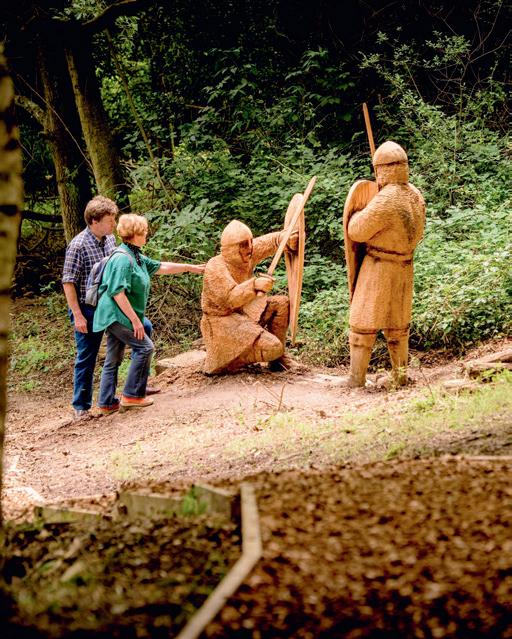
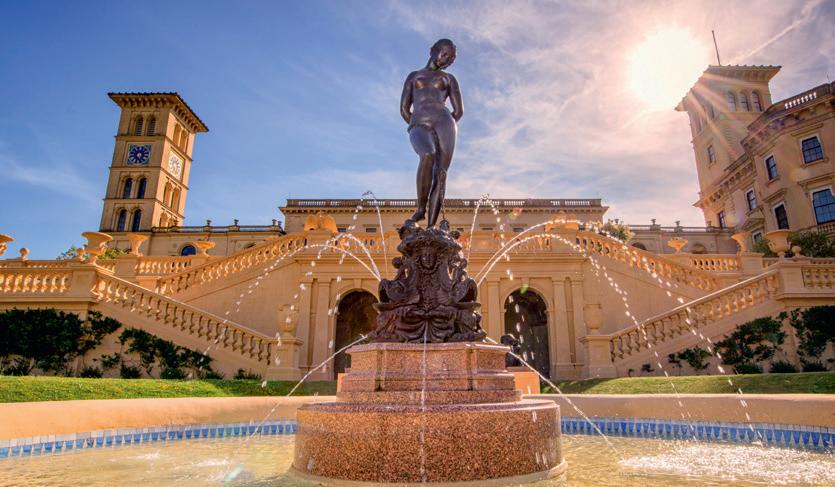
Isle of Wight

The Isle of Wight became the holiday destination of choice for the wealthy in the mid-19th century, following Queen Victoria and Prince Albert’s purchase of the Osborne estate on the north of the island in 1845. But you don’t have to be royalty to enjoy a visit. Whether you want to take in the island’s array of beaches, head down the pier in Sandown or see the stunning Shanklin Chine, there’s something for everyone. Of course, no visit would be complete without a trip to Osborne itself. As well as exploring the house, you’ll be able to head down to its private beach and follow the garden adventure trail. Stay at Osborne for longer at one of the three holiday cottages in the grounds of the house. www.english-heritage.org.uk/osborne Other sites nearby Carisbrooke Castle, Isle of Wight: The kids can visit the castle’s donkeys and brave the keep’s circular walkway. Yarmouth Castle, Isle of Wight: Due to reopen on 27 March, this was one of Henry VIII’s most sophisticated fortresses.
‘The Isle of Wight became the 19thcentury holiday destination of choice’

You can’t go far wrong with a few days spent around this part of England’s south coast. You could opt for a stay in Brighton, with its chic B&Bs, historic Lanes and pebble beach (great if you fancy a swim without getting covered in sand). Then there’s Rye, with its plethora of antiques shops and galleries hidden among its cobblestone streets. Or you may choose to explore the historic smugglers’ town of Hastings and the tranquil Bexhill-on-Sea. Either way, you’ll also want to take in Battle Abbey – the very site at which England’s future was determined more than 950 years ago, when William the Conqueror defeated King Harold. William founded Battle Abbey as penance for the bloodshed of the Norman Conquest, and it thrived as a Benedictine monastery for more than 400 years. Begin your journey back in time by taking in the battlefield itself before following the new wood-carved sculpture trail and exploring the Victorian walled garden. Extend your visit with a stay in the pretty South Lodge holiday cottage next to the battlefield, which sleeps up to four guests. www.english-heritage.org.uk/battle
Other sites nearby Bayham Old Abbey, Kent: Set in stunning grounds, these impressive ruins include much of the 13th to 15th-century church, the chapter house and a gatehouse. Pevensey Castle, East Sussex: The remains of what was originally a Roman fortress make for a great day out, with plenty of open grounds to roam and an exhibition tracing the castle’s story.
Cornwall

Located in the far west of Cornwall, Chysauster Ancient Village is midway between the artists’ hub of St Ives and the historic port of Penzance. It was originally occupied almost 2,000 years ago and is one of the finest examples of a Romano-British settlement in the country. You can still see the remains of the courtyard houses and a mysterious passage known as a fogou. www.english-heritage.org.uk/chysauster
Other sites nearby Carn Euny Ancient Village, Cornwall: This well-preserved ancient village was occupied from the Iron Age until late Roman times. Various sites, Isles of Scilly: For the more adventurous, there are eight sites in English Heritage’s care on the Isles of Scilly, including a Cromwellian castle.


Cornwall

Cornwall’s rugged northern coast is home to a number of holiday hotspots, including surfing favourite Newquay, foodies’ hub Padstow and Victorian resort Bude – not to mention Tintagel, which brings together history, mythology and natural beauty all in one place. Tintagel is inextricably linked with Arthurian legends but it was also closely involved in trade with the Mediterranean world before, in the 13th century, it became home to a castle built by Richard, Earl of Cornwall. The castle’s remains are divided by a deep chasm but were reconnected in 2019 following the opening of a spectacular footbridge. On the headland, see the remains of the Great Hall and an early medieval settlement, and discover a sculpture inspired by the legend of King Arthur. www.english-heritage.org.uk/tintagel
Other sites nearby Pendennis Castle, Cornwall: Use the vantage points from this picturesque castle to look out for enemies and even try loading an interactive cannon. St Mawes Castle, Cornwall: A visit to St Mawes allows you to see the guardhouse, gun tower and castle keep, not to mention a multitude of cannons.

KENILWORTH CASTLE AND ELIZABETHAN GARDEN
Warwickshire

At the heart of England sits Warwickshire, which is equally suited to both culture vultures (it’s where Shakespeare was born, after all) and adventure seekers. It’s also where you’ll find Kenilworth Castle, where, 900 years after it was first built, families can enjoy the impressive views from the tower built by Robert Dudley, Earl of Leicester, play hide and seek around the ruins or enjoy the kids’ audio tour. There are also activity packs with puzzles and games. www.english-heritage.org.uk/kenilworth
Other sites nearby Bolsover Castle, Derbyshire: Explore the lavish rooms and extensive grounds of this Stuart mansion (see page 36). Boscobel House and The Royal Oak, Shropshire: See Boscobel’s lodge and farmyard – as well as Charles II’s hiding place (see page 16).
Essex

The rural north-east corner of Essex is dotted with pretty market towns such as Saffron Walden and Epping, and is close to the historic city of Cambridge. It’s also home to the majestic estate of Audley End House and Gardens. Its storied history began in the early 1600s, when it was one of the greatest houses in England. Find out what life would have been like for the Victorian children who lived here, and go below stairs to see how household tasks were performed more than 100 years ago. On certain days, you can even meet Mrs Crocombe, Audley End’s Victorian cook and YouTube star. To make even more of your visit, book to stay in Cambridge Lodge, a holiday cottage within the grounds. www.english-heritage.org.uk/audley
Other sites nearby Wrest Park, Bedfordshire: This magnificent house is set in more than 90 acres of grounds. Grime’s Graves, Norfolk: Due to reopen in the spring, this is the only Neolithic flint mine in Britain that is accessible to visitors.
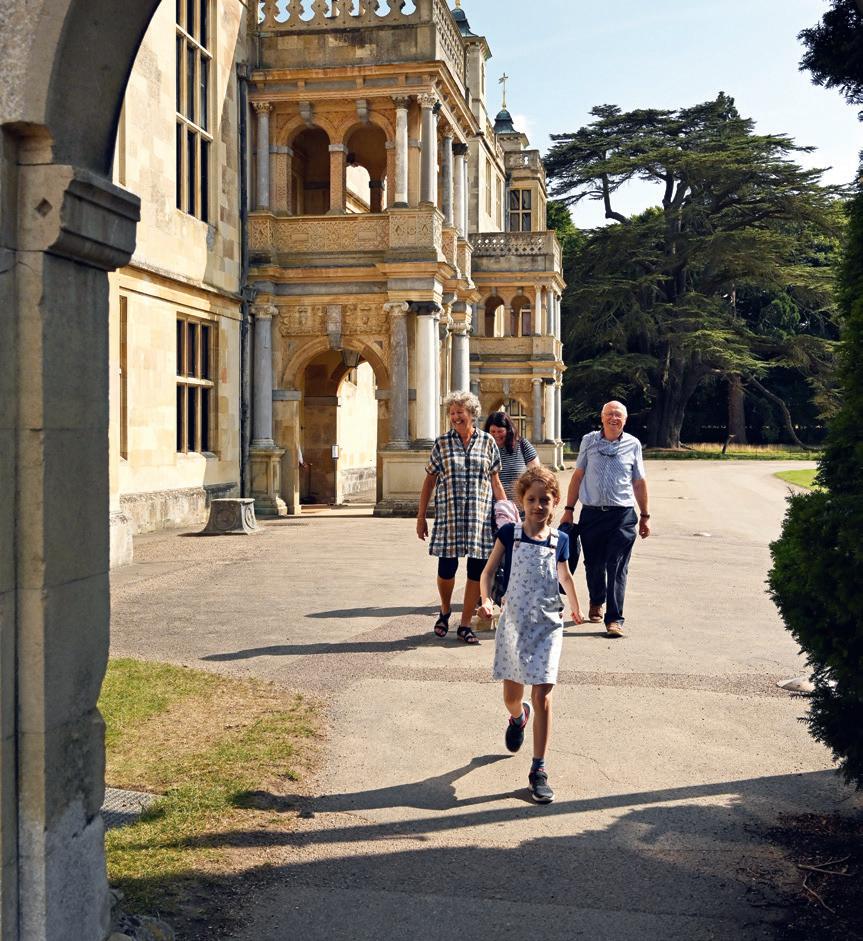
‘On certain days you can even meet Mrs Crocombe, Audley End’s Victorian cook and YouTube star’

FRAMLINGHAM CASTLE
Suffolk

On England’s eastern edge, Suffolk is ideal for getting away from it all. With miles of coastline, it’s beloved by birdwatchers and beachgoers alike, and is home to charming towns such as Bury St Edmunds and Southwold. One attraction you won’t want to miss during a visit is Framlingham Castle. Take a walk along its 800-year-old curtain walls and it’s easy to immerse yourself in the story of this 12th-century fort. In the exhibition space, find out more about Mary Tudor, who was proclaimed Queen of England while staying at the castle in 1553. There are interactive activities and a family trail to follow. Plus, you can look inside the workhouse, which provided shelter for Framlingham’s paupers from the 17th to 19th centuries. Flanked by pretty parkland and a lake, the castle has plenty of outdoor space too. www.english-heritage.org.uk/framlingham
Other sites nearby Saxtead Green Post Mill, Suffolk: This corn mill, whose origins can be traced back to the late 13th century, is due to reopen in the spring. Climb to the various floors, which are full of mill machinery. Orford Castle, Suffolk: Discover the maze of passages in this unique polygonal keep – one of the most complete in England.
BEESTON CASTLE AND WOODLAND PARK
Cheshire

Cheshire provides an excellent base for exploring the cities and countryside of the north-west. It’s home to part of the Peak District as well as Chester, one of the UK’s most important historic cities. While here, there’s also plenty to inspire visitors young and old with a trip to Beeston Castle. Climb to the top of the medieval fortress and peer down one of the deepest castle wells in England – supposedly the hiding place of Richard II’s lost treasure. An exhibition takes visitors through the site’s 4,000 years of history, and you can see first-hand how people may have lived in the Bronze Age in the reconstructed roundhouse. Paths around the castle take you through the habitat of a variety of wildlife. www.english-heritage.org.uk/beeston
Other sites nearby Wroxeter Roman City, Shropshire: Find out what life would have been like at what was once the fourth largest city in Roman Britain, and see objects found here in the museum. Wenlock Priory, Shropshire: Discover the impressive remains of a medieval priory, which reflect the Cluniac love of elaborate decoration.
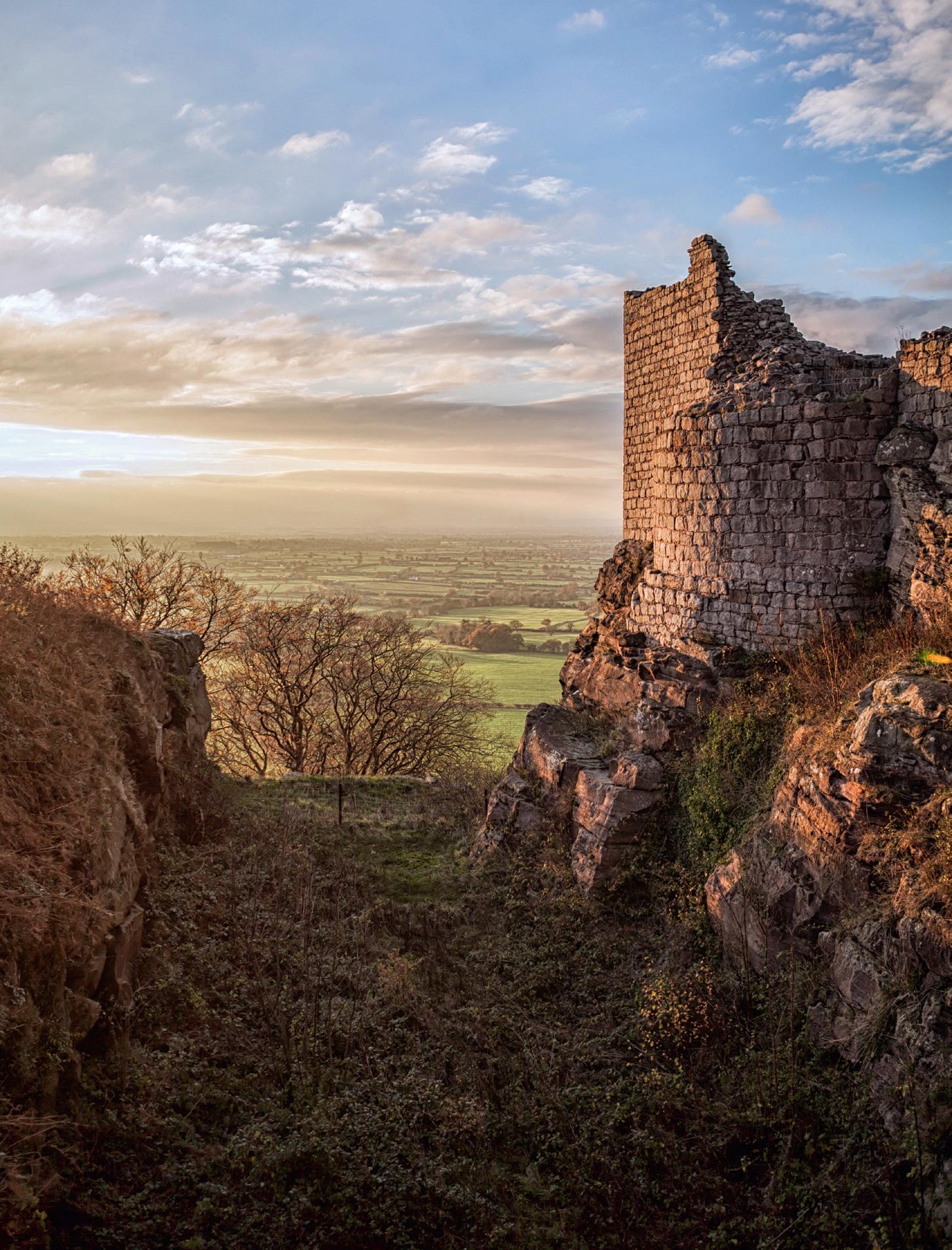
‘Peer down one of the deepest castle wells in England –supposedly the hiding place of Richard II’s lost treasure’
WHITBY ABBEY
North Yorkshire

Whether it’s the stunning historic city of York, the stately spa town of Harrogate or the ancient woodland of the North York Moors, Yorkshire has plenty to offer the staycationer. It’s also the location of the iconic Whitby Abbey, which has been inspiring visitors for nearly 1,500 years. A new museum tells the abbey’s complete story, and the Ammonite Quest – based on the legend of how a nun cleared the Whitby headland of snakes by turning them into stone – is the ideal way for families to discover Whitby’s hidden history. The abbey ruins provide the perfect setting for games of hide-and-seek. www.english-heritage.org.uk/whitby
Other sites nearby Richmond Castle, North Yorkshire: One of Britain’s greatest Norman fortresses – don’t miss the interactive exhibition. Rievaulx Abbey, North Yorkshire: Roam the impressive ruins of this Cistercian monastery then discover its story in the museum. Mount Grace Priory, House and Gardens, North Yorkshire: Explore this unusual medieval monastery and its renovated gardens (see page 74).
Northumberland

If you’re heading to the north-east, pay a visit to Belsay and you can take in its Grecian architecture, a medieval castle and 30 acres of remarkable gardens in a single day. The castle dates from the 14th century and was designed as a refuge during Anglo-Scottish warfare – you can still meander through its maze of rooms. Outside, the Quarry Garden boasts its own microclimate and is home to an array of exotic plants. www.english-heritage.org.uk/belsay
Other sites nearby Lindisfarne Priory, Northumberland: Situated across a causeway, a visit will stir everyone’s imaginations. Warkworth Castle and Hermitage, Northumberland: Activity packs allow young visitors to experience how the Dukes of Northumberland lived.



Cumbria

If exploring Hadrian’s Wall has long been on your to-do list, why not make this the year in which you finally visit what is one of England’s UNESCO World Heritage Sites? There’s no better starting point than Birdoswald Roman Fort, which was occupied throughout the Roman period. An exhibition reveals the story of Hadrian’s Wall, while children will enjoy a clue-cracking quest across the fort and the chance to try out replica Roman games. Then head out for a wander along the longest remaining stretch of the wall. www.english-heritage.org.uk/birdoswald
Other sites nearby Chesters Roman Fort and Museum, Northumberland: See how cavalry soldiers relaxed with the best-preserved military bathhouse in Britain. Corbridge Roman Town, Northumberland: Walk through the streets of this once-bustling Roman town. Housesteads Roman Fort, Northumberland: An impressive amount survives of this fort. Visitors can still see the barrack blocks, hospital – and even the toilets.
Walking is one of the most beneficial forms of exercise, and also one of the most underestimated in terms of well-being. It’s a great way to reach the recommended level of physical activity needed to stay healthy without the toll to joints, ligaments and muscles that more demanding sports exact.
When taking longer walks however, some of us can experience skeletal and muscular discomfort. Paul Goddard, 62, a Nordic Walking instructor from Saffron Walden in Essex, swears by a product called Turmeric+ as an effective means of keeping him active.
“I decided to become a Nordic Walking instructor in 2009 and started walking forty to fi fty miles a week. Two years ago it became uncomfortable to walk distances that should have been easy for someone of my age and fi tness levels. I felt very apprehensive as walking is not only my passion, but my business.”
Paul continues: “I started doing some research. I learned that turmeric could be helpful and bought supplements … and then stumbled upon Turmeric+.”
Curcumin, the active ingredient in turmeric, is diffi cult for the body to absorb, Some turmeric products offer high levels of curcumin but unless this is easily absorbed by the body, the higher amounts make little difference.
The need for easy absorption is what led the scientists at FutureYou Cambridge to create Turmeric+ using the patented ‘Curcuma Phospholipid Complex’ formulation. It’s thirty
FutureYou Cambridge, the nutraceutical company known for its science-backed health supplements, is offering new customers the chance to try its fl agship product, Turmeric+, for just the cost of the £1.50 postage.*



Turmeric+, was developed in Cambridge with the backing of a scientifi c advisory board including luminaries such as Dr Nicholas Shenker, a leading rheumatologist and chronic






















“Soon after taking it I experienced that ‘light-bulb’ moment”

times more absorbable than standard turmeric and contains vitamin C, which contributes to normal collagen formation for the normal function of cartilage.
“Soon after taking it I experienced that ‘light-bulb’ moment - I realised my knees felt like they used to. I take Turmeric+ religiously now. I walk around two hundred miles a month and even my customers have remarked on my mobility.
“Walking is great for fi tness as well as your mental health.
pain expert at Cambridge University Hospitals NHS Foundation Trust (Addenbrooke’s). The formulation is thirty times more absorbable than standard turmeric, and also contains vitamin C which contributes to normal collagen formation for the normal function of cartilage. Since launching the product the company has continually received positive feedback from happy customers, particularly on Trustpilot, the independent online review platform.
‘As far as I’m concerned this stuff is magic... Highly recommend!’ wrote one 5 star
Being able to walk easily has made a huge difference to my life and I feel fi tter now than I did twenty years ago.”
Adam Cleevely, CEO of FutureYou Cambridge comments;
“We want to support more people to get active and we think Turmeric+ can play an important role in that journey. We have tens of thousands of happy Turmeric+ subscribers who regularly tell us about their positive stories, just like Paul.”
reviewer. ‘The product appears to meet all its promises and the service levels from FutureYou are fi rst class,’ said another.
‘We’re very happy to give people their fi rst pack for free so they can experience it for themselves,’ says Adam Cleevely, the company’s CEO.
‘It might sound bonkers but it really isn’t. We’re that confi dent in the effectiveness of our formulation.
‘I can’t think of a better way to convince people. If they like it, they will stick with it. Tens of thousands of customers already do.’



My experience Your say Trending Ask the experts

Got an interesting story to share?
Email us at membersmagazine@ immediate.co.uk
How music teacher Alan Moore used lockdown to complete a project years in the making
I have always been interested in history and I first joined English Heritage about 25 years ago. My other great interest is music. I was head of music at a secondary school and, currently, I teach piano and work as a composer. A few years ago, I started work on a collection of instrumental music inspired by my favourite English Heritage sites. I’m originally from West Cumbria. Castlerigg Stone Circle wasn’t too far away and I’ve always been drawn to the mystery of this ancient structure. This was perhaps the catalyst for the album and led me to look at other properties across Yorkshire, my favourite site being Rievaulx Abbey. Some of the other tracks were inspired
by Whitby Abbey, Brodsworth Hall and Mount Grace Priory.
The real push to finish the project came about because of the first lockdown – I had plenty of time as my piano teaching had to be placed on hold. The music (which you can hear at www.alanmooremusic.com) represents my emotional response to these places, and I just went with the flow, trying not to be too literal with my chosen sound sources. The album has just had a global digital release by a record label that specialises in instrumental music and it’s wonderful to think that such a personal project will potentially reach a wider audience. www.english-heritage.org.uk/ rievaulx




FREE RETURNS FOR 90 DAYS
Cecilia Nightdress (below)
A delicate crochet panel gives a timeless, classic feel to this silky, ¾ sleeved nightdress.
S503 £79 NOW £59

















Spirit of the Andes brings you beautiful, artisan-made clothing and accessories crafted from the finest Baby Alpaca and Pima fibres. Pima Cotton’s legendary softness and hypoallergenic properties make it the ideal, truly luxury fabric for nightwear – deliciously warm in winter, delightfully cool in summer. Our Peruvian Pima Cotton is the best in the world!

Rafaela Nightdress (main)
Silky soft nightdress with pretty ruffles on a gentle scoop neckline, sleeves and hem.
S502 £79 NOW £59



Sizes: S, M, L, XL, 2XL Length of L: 46”


Both nightdresses are crafted from 100% Peruvian Pima Cotton, machine washable and are available in baby blue, white and baby pink.










Beautifully hand crafted by Peruvian artisans, each brushed suede slipper is lined with the cosiest sheep’s wool and finished with a sublimely soft Alpaca wool collar for comfort. Available in tan, navy or soft pink. Sizes: UK 3-4, 5-6, 7-8 S680








Share your stories and send us your experiences, photos and tips
Each issue, our star letter writer will receive a Craghoppers jacket worth £100 – perfect for exploring in the outdoors. To be in with a chance of winning, simply send in a letter or email for publication in the magazine. Email us at membersmagazine@immediate.co.uk or write to us at English Heritage Members’ Magazine, Immediate Media, Eagle House, Colston Avenue, Bristol BS1 4ST.
Thank you for publishing the article by Olivette Otele in the October issue. Many people seem inclined to think that highlighting the dreadful trade that underpinned the wealth of some of our grand estates and historic houses calls into question their beauty and importance. But as an older, white English Heritage member, I would say that the more we understand the full picture of our past, the richer our experience of these places. We don’t shy away from hearing the awful stories of prisoners kept in castle dungeons, so why would we want to brush aside accounts of the human misery behind the vast wealth of our forebears?
Isabella Stone
Lord Wilson of Rievaulx
Your article in the July issue prompted my 87-year-old brain into action. When Sir Harold Wilson was admitted to the House of Lords he adopted the name of Lord Wilson of Rievaulx. Going back to 1945, it was my father who discovered the 29-year-old Wilson when he was looking for a prospective Labour candidate for the first general election after World War II. Harold, as he always wanted to be called, stayed at my home with his young wife and his first son Robin. So began his career ending up as prime minister.
John Last

I took these two photographs seconds apart on a recent trip to the magnificent Witley Court. When we got home my five-year-old daughter Saffron noticed a haunting silhouette in the main doorway of the first picture. Have we captured an apparition from the past? It certainly captivates us to think so!
Sam Davies and family


I thought I should drop you a line to correct an error on the Ask the experts page in the July 2020 edition. Questioner Steve Waldenberg states that Hadrian’s Wall is built across the narrow point of the British mainland, an idea which is not referenced in Paul Pattison’s reply. This is not correct: the Forth/Clyde isthmus in Scotland is narrower, and this is also where the Romans built their Antonine frontier.
Alan Montgomery
Paul Pattison, senior historian, replies: This takes me back to exam days – read
What’s got you talking on our social media channels?
Snow business
An enchanting selection of photos of Belsay Hall in Northumberland covered in snow generated 3,300 likes on our Facebook page. bit.ly/3bXt87N
Victorian treats
Our latest Mrs Crocombe video, in which the Victorian cook shows us how to make sweet treats known as Swiss Baskets, has almost 300,000 views. bit.ly/2LQXDS8
www.english-heritage.org.uk/magazine facebook.com/englishheritage twitter.com/englishheritage instagram.com/englishheritage
the whole question! Having done so, of course I agree that Hadrian’s Wall, between the Tyne and the Solway, does not cross the narrowest part of the British mainland, east to west. That statistic belongs to the crossing between the Forth and the Clyde, where the Emperor Antoninus Pius ordered the building of a second wall around AD 142. A Roman fleet sailed around the north of the mainland in the AD 80s, establishing its extent and gaining some idea about its topography. The content of my original answer – how the Romans worked out true distances – remains valid.
Stonehenge inspiration
My husband and I, with his cousin, visited Stonehenge to see the ‘Your Stonehenge’ exhibition, in which there is a photo of my mum, two uncles and grandma sitting on Stonehenge in 1933. When my grandson, Alfred, aged three, heard about it, he built his own Stonehenge. He is the great-greatgrandson of the mum in the 1933 photo. Janice Clarke


Abbey days
This dramatic view of Rievaulx Abbey in North Yorkshire has had 7,400 likes. The abbey is seen from the east, showing off its idyllic location. bit.ly/3iSoXvv




















” Ms Sherliker Surrey





We have all been spending more time indoors with our heads in a book or absorbed in our favourite hobbies. Poor quality light causes eyestrain and can a ect our ability to read and concentrate.
TVs are not the only high definition technology
A Serious Light o ers incredible clarity, intense brightness and high de nition detail. ey are built to take the strain away from your eyes.
If you’re an avid reader or enjoy an indoor hobby, a Serious Light will completely transform your enjoyment in a way you never thought possible.

So pure Austrian cotton jersey with elegant collar and narrow placket, straight hem and side vents. Machine washable.
XS (30-32”) S (34-36”) M (38-40”) L (42-44”) XL (46-48”)
£45 £35 each or buy 2 for £60 Postage & packing £5.50 FREE
UK 0333 043 9351 Overseas 00 44 16979 20637 (we are here 9am-6pm Monday-Friday & 9am-5pm Saturday).
Order online www.countrycollection.co.uk or complete and return the Freepost coupon. O er ends 20th May 2021. Allow 7 days for delivery.
(current catalogue price refers to Country Collection Summer Holiday, Garden Party and Mid Summer 2021 catalogues).







WHAT’S NEW?
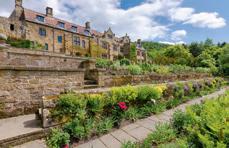
Test your knowledge of historical gardens
From Darwin’s garden to Carthusian monks’ plants, try our 20 questions quiz. www.english-heritage. org.uk/quizzes
The English Heritage team answers your questions





Help your children make a castle model
Make our latest ‘Homes through history’ model of Stokesay Castle’s Tower. www.english-heritage. org.uk/kids
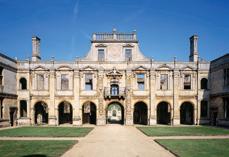
Listen to our lastest podcast episodes
Don’t miss forthcoming episodes on Lindisfarne, Kirby Hall and more. www.english-heritage. org.uk/podcast

Win a kids’ goody bag worth £100
We’re asking young readers to imagine life under siege in a castle in our children’s competition. www.english-heritage. org.uk/kids
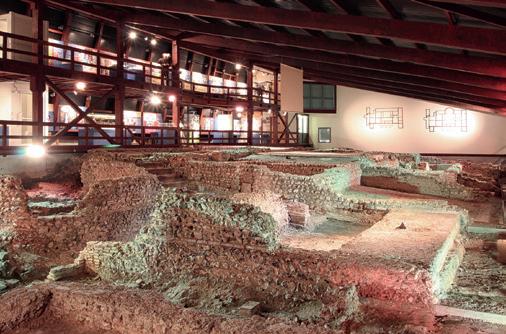
Eric Fitch asks…
Q Why are there so few significant Roman remains in Britain, while there are many substantial structures extant on the continent?
Andrew Roberts replies…
A Survival depends upon so many different factors, including climate, topography and trends in urban development. Some buildings survive in southern Europe because they were adapted by successor societies and remained continuously important (for example, the Pantheon in Rome). Most Roman settlements in Britain seemed to have been abandoned within a century or so to ruin, and their buildings robbed of accessible stone over the medieval period. But some impressive remains are still with us. Many Roman town walls survive in large sections (eg London and St Albans) as do amphitheatres (Chester and Silchester) and villas (Lullingstone). Part of a basilica at Wroxeter stands tall and the great walls of the Shore Forts at Porchester, Pevensey and Richborough are still imposing. And, if we consider length and complexity (if not height) to be significant, Hadrian’s Wall is one of the largest surviving structures from the Roman Empire.
SEND US A QUESTION
Andy Radka asks…
Q Is coastal erosion an issue at Whitby Abbey or can we be assured that it is safe for future generations?
Jeremy Ashbee replies…
A
We’re lucky enough to have many important historic buildings on the coast, notably abbeys, castles and forts. Projected rates of coastal erosion and sea-level changes mean that we really can’t guarantee that they will all be with us forever. But what we can do is identify what is most important and most vulnerable at each site, and work towards their conservation in the short and medium-term. Even where the long-term future is doubtful, we must do all we can to delay the end of their story.
Sarah Carr asks…
Q Who was the landscape designer behind Wrest Park in Bedfordshire and where did they get their inspiration?
Emily Parker replies…
A The garden at Wrest Park is one of the most complete remaining 18th-century formal landscapes in the country, with additions that mark every major development in English garden design until the mid-19th century. So it includes work by many leading 18th-century garden designers and architects, including Batty Langley, Thomas Archer, Thomas Wright and Lancelot ‘Capability’ Brown. The Great Garden, created in the 1680s, was inspired by the great formal gardens of France. In the 18th century, small areas inspired by the latest garden fashions were added, including a Chinese bridge and temple. In the 1830s, a new house and parterre garden were also created in the French style.
For your chance to have your questions answered by one of our English Heritage experts, email us at membersmagazine@immediate.co.uk
Enjoy big discounts and save on spring bouquets with our latest offers. Discover even more offers at www.english-heritage.org.uk/rewards


SAVE UP TO 20% ON FERRY TRAVEL TO THE ISLE OF WIGHT WITH WIGHTLINK
Transport yourself to a gentler pace of life on the Isle of Wight. Make plans or plan to do nothing, it’s entirely up to you. There’s a whole island waiting to be discovered when you’re ready. SAVE UP TO 20%
● The 67 miles of coastal path span majestic cliffs and dense forests, ideal for a stroll or extended walk as you take in the sea air and beautiful views.
● History awaits you at the grand English Heritage property Osborne House, once the residence of Queen Victoria.
● Looking for something to do with the family? Then don’t miss out on Monkey Haven. This award-winning sanctuary for monkeys, birds and reptiles delights visitors of all ages.
● Visit Shanklin Chine, the historic and atmospheric gorge that first opened to the public in 1817. From there, it’s easy to reach Shanklin village and beach, once a favourite of author Jane Austen.
● Finish up your day with a trip to Bembrige Harbour and pontoon, a bustling hub of seafaring activity on the Isle of Wight since days gone by.

To redeem all of these offers and more, go to www.english-heritage.org.uk/rewards

15%
15%
SAVE ON OUTDOOR KIT FROM TOP BRANDS
Enjoy a 15% discount at Cotswold Outdoor, both in-store and online. It has a huge range of kit for almost any activity from the very best brands. SAVE 12%

SAVE ON A MIXED CASE OF RED & WHITE WINE
Order a case of three bottles of red and three bottles of white wine from Laithwaite’s for just £38.94 – a saving of more than 50%.




GIVE YOUR GARDEN A MAKEOVER THIS SPRING
You can save 15% on everything in the Sarah Raven range of plants and bulbs – all trialled and tested to ensure they will be beautiful and easy to grow.

£50 VOUCHER
Receive a £50 voucher to spend at John Lewis when you switch your electricity and gas to Ecotricity, Britain’s greenest energy supplier.
Leading mother and baby clothing brand JoJo Maman Bébé is offering you the chance to win a £150 gift card. Discover its bestselling maternity and kids’ collections, including colourful lightweight knits for spring.


12% OFF YOUR NEXT BLOOM & WILD ORDER
Treat a friend or loved one this spring with a beautiful selection of flowers from Bloom & Wild. Enjoy 12% off peonies, roses, lilies and more.
5 TIPS ON ARRANGING YOUR SPRING FREESIAS
1 Opt for a vase about 30cm tall with a wide base or, if you don’t have one to hand, a jam jar or water jug will work.
2 Be sure to trim the stems of your plants to encourage hydration and maintain a fuller appearance.

3 Place your flowers at an angle for added dynamism, and choose your favourite as an eye-catching focal point.
4 Mix and match your bouquet of flowers and get really creative, ensuring a visually arresting and beautiful display for your home.
5 Where’s the ideal place to show off your glorious arrangement? That’s for you to decide. One important recommendation is to keep your freesias out of direct sunlight, as they thrive in cool spots. It won’t be long before you have honed the perfect blend of colours and shapes.












Now with most of us spending more time at home –our personal outdoor space has never been so highly prized. And to keep your garden secure you’ll need a fence that you can rely on. A fence that’s guaranteed for 25 years. This is why ColourFence is so popular. It’s guaranteed not to warp, crack, shrink, rot or peel. This means no maintenance, painting or repairs for 25 years. So you’ll spend a lot more free time enjoying your garden without the constant battle and expenditure of maintaining a decent looking boundary line. Take a look at the ColourFence range now. You can tie in the colours to show off your plants and flowers in their true glory. ColourFence will even withstand windgusts of up to 130mph. Making it, probably, the world’s best maintenance-free fence. Our competitive pricing and easy payment plans mean that every garden can now enjoy the beauty of ColourFence. To see the full product range and receive your free copy of the Good Fence Guide, freephone us today and find out why it makes sense to choose ColourFence.
Despite many coats of preservative, the structure of the wooden fence in our front garden rotted, and a recent storm sent it off down the road, thankfully missing the neighbour’s car.






Guaranteed† not to warp, crack, shrink, rot or peel
Professionally installed to withstand wind gusts of up to 130mph
No painting or repairs for 25 years
Maintenance free until 2046†
No treatment costs
4 mix and match colours and a choice of styles and sizes
However, every cloud has a silver lining, and we couldn’t be more pleased with our new ColourFence. It looks great, and we are looking forward to years of summers with no fence paint or algae treatments.







Mr & Mrs P. Glamorgan EASY PAYMENT PLANS*

To see our wide choice of sizes, colours and designs –contact us today!




Your guide to this season’s English Heritage events


Don’t miss our special week of events taking place from 12–18 April and organised exclusively for you as a thank you for your support
INSIDE Easter Adventure Quests, A Grand Family Day Out at Stonehenge and Osborne, Dover at War, Kids Rule! events at half-term and more!



















































































































WHATEVER your sleep problems, the dream of a good night’s sleep has now become a reality - thanks to a breakthrough invention - the Gx Suspension Pillow. All conventional pillows atten signi cantly during sleep - becoming less supportive and more uncomfortable as the night progresses. The result of this is disturbed and broken sleep, frustration and the fruitless search for a better pillow. That search is now over!
To stop the attening we’ve come up with a solution that’s so simple it’s ingenious. By the clever installation of ‘double X’ internal ties we have produced the world’s rst pillow to retain much more of its plumped shape all night long.
The ties work to pull the pillow in and up so that your head and neck are gently cradled and supported in softly sprung comfort. As well as having the revolutionary internal ties, the pillow shell is 100% cotton with our superb hypoallergenic Polycoz lling, and we have added a unique integral air vent to help keep you cool through the night.
Actor Rula Lenska had this to say:
It is rare that something advertised as unique and life changing turns out to be true!! I have a chronic back and neck situation and I can honestly say these pillows make a huge difference!! Comfortable…supportive…and positively magical for my neck!! Congratulations! Many, many thanks





As if all these bene ts were not enough, you can purchase the pillow with our 30-night comfort guarantee – total satisfaction or your money back*. Tens of thousands of delighted customers have already rediscovered the bene ts of a great night’s sleep, why not join them? Now available with FREE delivery for English Heritage readers, use code EH1.

Harley Street Consultant and back pain specialist, Dr Deane Halfpenny, recommends Gx Pillows:
I can honestly say that your pillow has made the world of difference… and fully endorse your pillow as being quite unique in its ability to maintain support throughout the night













Unique internal tie technology maintains shape throughout the night

Stays plump all night long
Provides comfort and support
Integral air vent keeps you cool
Luxurious 100% cotton shell
Hypoallergenic Polycoz lling
Designed and made in the UK
Choose from Medium-soft or Medium- rm
Most sleepers prefer Medium-soft however if you prefer a rmer pillow choose Medium- rm
Sleep


Stonehenge Up Close
Gain a rare and fascinating insight into the World Heritage Site with an exclusive tour led by one of English Heritage’s experts.

LONDON
Discovering Blue Plaques
Choose from two walks led by historian Dr Susan Skedd in central London to find out more about the lives now celebrated by blue plaques.

Fight Like a Knight
Our medieval knights will put the kids through their paces with activities including a sword school, a test of strength and more.

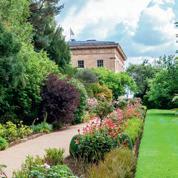
The Story of Mrs Crocombe’s Cookbook Join Kathy Hipperson to find out how a Victorian cook became a YouTube sensation almost 100 years after her death.
Peek at the Project Go behind the scenes with the conservators working on Belsay Awakes, a major project to improve the visitor experience to the site.
To
Book Members’ Week events online at www.english-heritage.org.uk/members-events. Booking opens on 17 March

Start planning a week to remember with our guide to the exclusive free Members’ events we have organised as a thank you for your support. With over 60 events to choose from at sites across the country, there is something for all ages and interests. Booking is online-only but if you have any queries please call our customer services team on 0370 333 1181
Go to the English Heritage website to check the latest information on access to sites and events

Bristol’s Maritime Heritage Walking Tour
MON 12 APR, 11am –12.30 pm
Join Dr Richard Stone, early modern historian from the University of Bristol, to learn about this city’s chequered past. From genteel Queen Square to the bustling docks and sites of industry, this walk will explore the role slavery played in Bristol’s expansion during its 18thcentury ‘golden age’. We will also look at how Bristol has remembered those involved in the trade, both perpetrators and victims, and the debates that this continues to spark today.
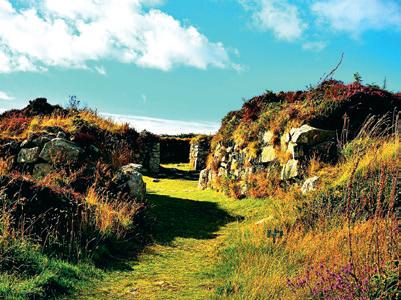
Chysauster Ancient Village
THU 15 APR, 3.30 pm –5.30 pm
Chysauster Ancient Village is one of the best examples of a courtyard house settlement, which are unique to west Cornwall and the Isles of Scilly. These were the dwelling places of small communities from the late Iron Age to the Roman period. Join local archaeologist Jacky Nowakowski for a tour of the site and learn about its history, archaeological surveys and life here during Romano-British times.
A Tale of Two Sieges SAT 17 APR, 10.30 am –12.30 pm
Tour the beautiful ruins of Old Wardour – a castle with a bloody Civil War past. Listen to the tale of two sieges –Royalist Lady Blanche’s romanticised but short-lived defence is contrasted with Roundhead Edmund Ludlow’s bloody winter siege. Follow the action, room by room and tunnel to tower. Light refreshments included.
Stonehenge Up Close WED 14 APR, 7.30 am –11am
Gain a fascinating insight into the World Heritage Site with an exclusive tour led by one of our experts. Start the tour with exclusive access to the stone circle at Stonehenge. Following breakfast, our experts will share details of the wider landscape surrounding Stonehenge and discuss the links to Durrington Walls, Woodhenge and The Cursus.

Discovering Blue Plaques in Charing Cross and Whitehall
THU 15 APR, 10.30 am –12 pm
Join historian Dr Susan Skedd on a guided walk to discover famous figures who lived and worked in Charing Cross and Whitehall. Follow in the footsteps of Samuel Pepys as we explore the history of the area and find out about the lives of the writers, artists and spymaster commemorated with blue plaques.

Discovering Blue Plaques in Westminster
FRI 16 APR, 10.30 am –12 pm
Join historian Dr Susan Skedd on a guided walk to discover which famous figures from the past lived and worked in Westminster. Find out about the lives of the politicians, writers and pioneering women who have been commemorated with blue plaques as we explore the history of some of London’s finest Georgian streets.
The Making of England
SAT 17 APR, 11am –1pm
The idea of England is as divisive as it is uniting. In this brand new walk around its ancient capital city, we discover its humble roots in the Anglo-Saxon period, and find out how it became the centre of the largest empire the world has ever seen. The walk promises tales of maniacal monarchs, deplorable dealings and inspiring artists.
What is land art – and how do you make it?
As part of Members’ Week, we’re hosting a series of land art events that you can take part in at Beeston Castle, Brodsworth Hall, Marble Hill House (see right), Walmer Castle, Wenlock Priory and Wrest Park. The concept of land art first came to the public’s attention in the 1970s, and involved ambitious projects in which artists used the natural world as a sculptural medium. A good example of this was Robert Smithson’s Spiral Jetty (1970, pictured), a 460 metre-long spiral of rocks and mud that he created on Great Salt Lake in Utah. Another wellknown practitioner is the British artist Richard Long, who won the Turner Prize in 1989 for White Water Line. But anyone can devise land art, whether it’s making a small sculpture from pebbles found on the beach, or creating an abstract design of twigs and branches in woodland. Sign up for one of our land art events and, while we can’t guarantee you’ll win the Turner Prize, you will walk away having helped to create a unique piece of outdoor sculpture inspired by the natural world around it.
Farm to Fork at Marble Hill Park
MON 12 APR, 10 am –12 pm

Come and learn about the farm-to-fork food production for the new café at Marble Hill Park. We will be growing zero-miles vegetables, fruit and herbs for the delicious food cooked in the café. You will be given a tour of the kitchen garden and the newly restored gardens by the head gardener, Kate Slack, in addition to sowing some heritage vegetable varieties that you can grow at home. This event also includes a light lunch at the café, surrounded by the newly planted gardens.
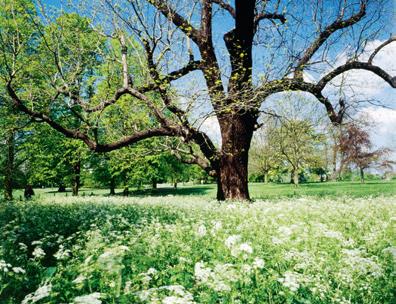
Create Your Own Land Art! FRI 16 APR, 10 am –1pm
Join local artist Michael Coldman at Marble Hill as you create your very own piece of land art. Get inspired by your surroundings, draw inspiration from the house and history, and create something special using the natural woodland materials provided.
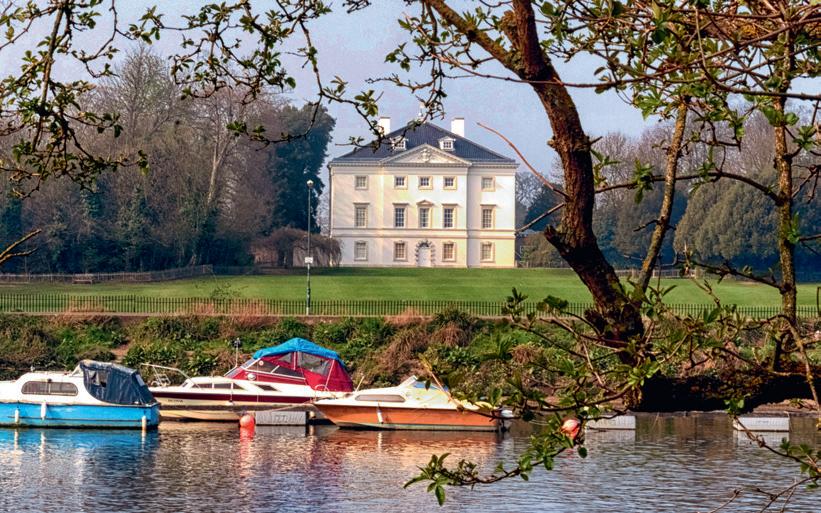
Fight Like a Knight
FRI 16 APR, 10 am –12 pm
Do you have what it takes to become a knight? Learn how to fight like a knight in this very special masterclass. Our English Heritage knights will put you through your medieval paces with various activities including a sword school and a test of strength.
Twilight Tour
THU 15 APR, 5 pm –6.30 pm
Experience the evening atmosphere in this exclusive out-of-hours access to Deal Castle. Discover the history of the rulers, rogues and residents who once dwelled here, and marvel at the spectacular sea views from the bastions. Light refreshments provided.

Fallex 62 and the Regional Seats of Government
MON 12 APR, 6.15 pm –7.30 pm
This looks at how, post-Second World War, the government was forced to consider how to control the country in the event of nuclear war. Discover how these plans were put to the test and what the outcome of that test was. It was not quite what they were hoping for…
Go to the English Heritage website to check the latest information on access to sites and events
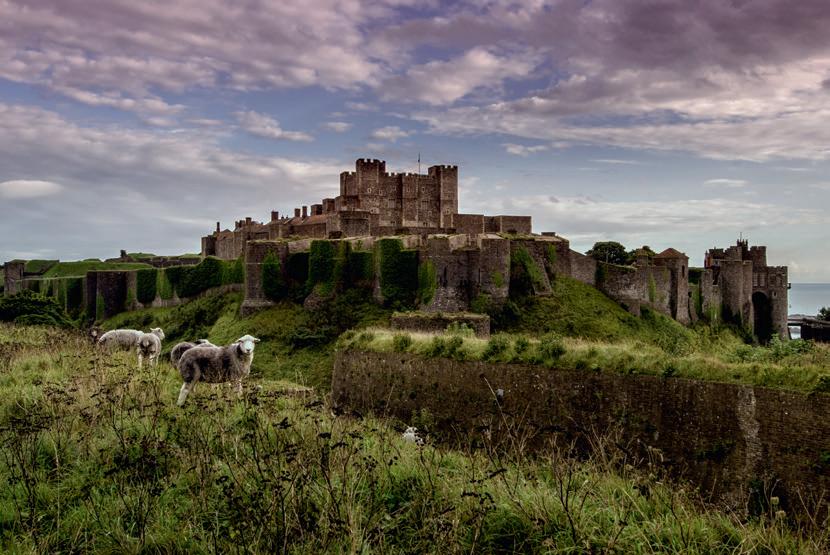
Stone Hut Tour –Behind the Scenes
TUE 13 APR, 10.30 am –12 pm
Approximately 150,000 objects from English Heritage sites throughout Kent and East Sussex are stored at Dover Castle. These range from Stone Age flints to devices for measuring nuclear bombs but, for various reasons, they aren’t on public display. However they are still important to our work. This is an opportunity to see inside the store, and find out how these objects are looked after and researched.
Dover Castle’s Hidden History
WED 14 APR, 4 pm –7pm
Join us on a walking tour of Dover Castle for exclusive after-hours access to some of the castle’s hidden history. Hear stories of the site as you move between buildings, from Constable’s Tower to the debtors’ prison. Who knows where you might end up?

A History of 1940s Cosmetics
FRI 16 APR, 11am –12.30 pm
Join make-up artist Rebecca Butterworth, star of the English Heritage historical make-up tutorials, at Dover Castle as she talks about 1940s makeup, hairstyles and beauty standards. Discover how beauty became a duty while fashion was on ration.
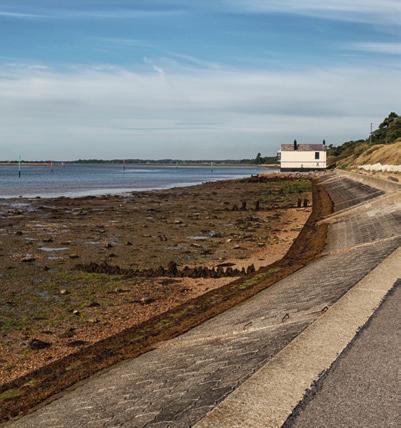
LEPE COUNTRY PARK
Codename Mulberry
SUN 18 APR, 11am –1pm
Walk the beach at Lepe – one of the most important but unsung wartime locations for D-Day preparations. See the numerous concrete military remains, including the giant ‘Mulberry’ floating harbour launch points and the ‘Dolphin’ pier-head embarkation platforms.

AUGUSTINE’S ABBEY
Thomas Becket – 850 Years Later
WED 14 APR, 5.30 pm –6.45 pm
Join St Augustine’s Brian McHenry, one of the abbey’s volunteer guides, to hear about the life, the martyrdom and the enduring impact of Archbishop Thomas Becket, 850 years later. The talk will focus on the dramatic events of the last month of Becket’s life.
THU 15 APR, 7pm –1am
Listen and look up, as the finest musicians in the land duet with the sweet sounds of the nightingale. Join The Nest Collective folk singer Sam Lee in the forest and delve into his trove of rare songs and folklore by the fireside. After dark, step silently into the woods to hear the nightingales sing in thrillingly close proximity.
Hidden Buildings of Lullingstone
MON 12 APR, 11am –12.15 pm
Join us on a tour of Lullingstone and discover some of its buried history. Hear about the hidden buildings of Lullingstone, including the temple mausoleum, kitchen, tannery and granary. None of them are visible as they were reburied in the 1960s but they are the buildings that visitors most ask us about.
Osborne Estate Tour
WED 14 APR, 11am –1pm
We will look at the wider estate and cover some of the things that are usually kept behind the scenes. We will see some of the tree plantings Prince Albert made to enhance the estate’s privacy, a variety of our spring flowering wild flowers, and a few of our unusual but fascinating features such as the sewerage beds.
Osborne Garden Tour
SUN 18 APR, 11am –12.30 pm
Taking in the walled garden, pleasure grounds and finishing on the terraces, this tour will cover the garden’s history, Prince Albert’s developments and the lovely spring flower displays.
The Hurricane: Britain’s Forgotten Fighter
FRI 16 APR, 6 pm –8 pm
Though not as well-known as the Spitfire, the Hurricane was Britain’s front-line fighter during the dark days of 1939 to 1940, during which it played a crucial role in the Battle of Britain. Join author Peter Neale for a unique talk on the development of this important aircraft, using the museum’s own Hurricane Mk II (BN230) as a case study, followed by a tour of the museum, which will focus on the aircraft and some of the stories of the people behind them.

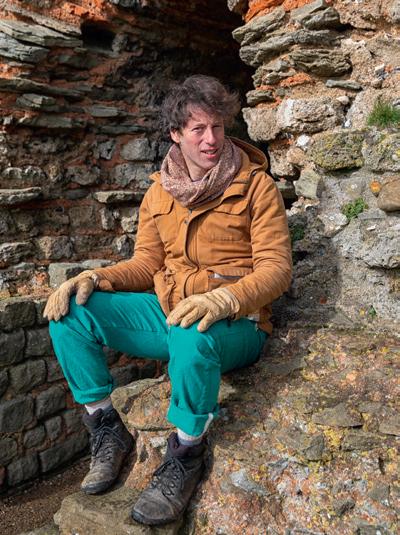
Create Your Own Land Art!
SAT 17 APR, 12.30 pm –4.30 pm
Join Outdoor Studios at Walmer Castle to participate in a collaborative piece of land art under expert guidance. Inspired by the unique surroundings and natural materials provided, learn about and respond to geologically and historically rich landscapes through creativity. Don’t forget to bring a camera so you can capture what you create.
Book Members’ Week events online at www.english-heritage.org.uk/members-events. Booking opens on 17 March
KENILWORTH CASTLE AND ELIZABETHAN GARDEN
Fight Like a Knight!
WED 14 APR, 10 am –12 pm
Learn how to fight like a knight in this very special masterclass. Our knights will put you through your medieval paces with various activities including a sword school and a test of strength.

Fight Like a Knight!
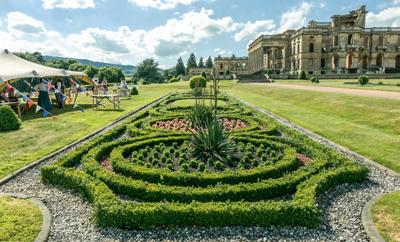
WITLEY COURT AND GARDENS
Witley Court and Gardens
– A Behind-the-Scenes Look
MON 12 & THU 15 APR, 10.30 am –3.30 pm
Explore parts of the court seldom open to visitors, then take a tour of the grounds with the gardening team. Please bring your own lunch to eat on-site.
Create Your Own Land Art!
SAT 17 APR, 10 am –1pm
Join us in the gardens of Witley Court as you create your very own piece of land art. Be inspired by your surroundings and create something special using the natural woodland materials provided. Don’t forget to bring a camera along so you can capture what you created.

ASHBY DE LA ZOUCH CASTLE
Raptors Revealed: An Introduction to Falconry
FRI 16 APR, 1pm –4 pm
Raphael Historic Falconry welcomes you to the historical setting of Ashby de la Zouch Castle to learn about, handle and fly traditional falconry birds under the guidance of professional falconers.
Fight Like a Knight!
MON 12 APR, 10 am –12 pm
Learn how to fight like a knight in this very special masterclass. Our English Heritage knights will guide you through activities that include a sword school and a test of strength!
KIRBY HALL
Pipers! Strike Up! Music and Musicians in a Rural Tudor Household
MON 12 APR, 10 am –11.30 am

Join members of de Mowbray’s Musicke as they play a variety of historical instruments – including shawms, crumhorns, bagpipes, cornamuses, recorders, harps, and three-holed pipes and tabors –describing their construction and use.
WENLOCK PRIORY
Photography Walk of Wenlock Priory
FRI 16 APR, 10.30 am –12.30 pm
Come and learn how to take professional-looking photographs at the tranquil ruins of Wenlock Priory, which stand in a picturesque setting on the fringe of beautiful Much Wenlock.

Go to the English Heritage website to check the latest information on access to sites and events
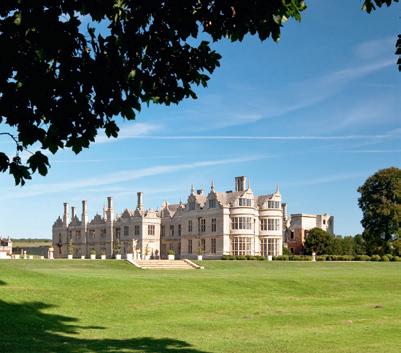
Kirby Hall Uncovered With Simon Thurley
TUES 13 APR, 10.30 am –12.30 pm
Kirby Hall’s rich history, decoration and design show that its successive owners were always at the forefront of new ideas about architecture and design. To launch his new guidebook for the site, join former English Heritage CEO Simon Thurley, as he talks about the history and architecture of Kirby Hall. The event includes a site tour, and refreshments are included.
AUDLEY END HOUSE AND GARDENS
Spring and the Year Ahead in the Kitchen Garden
MON 12 APR, 11am –12 pm
Join kitchen garden supervisor Gemma Sturges during the busiest time of the year in our productive walled garden. Find out about the seasonal jobs being done by the team and early crops that can be harvested from the garden.
Trial By Dinner: The Art of Dining in Victorian England
MON 12 APR, 11am –12.30 pm
Join celebrated food historian and author Dr Annie Gray – who specialises in British food and dining from c.1650–1950 – as she delivers a talk that covers the changing layout of the table, and etiquette of dining, in the 19th century.
Historic Beverley: A Walking Tour
THU 15 APR, 10 am –12 pm
Enjoy a wander through the Georgian market town of Beverley – once the ninth largest town in England and a centre for more than 30 guilds and trades.
BRODSWORTH HALL AND GARDENS
Recent Garden Projects at Brodsworth Hall and Gardens
WED 14 APR, 10 am –11.30 am
Head gardener Dan Hale discusses the recent work undertaken on the Target Range area. A hot drink will be provided.
Cuckold’s Delight & Mother’s Ruin: A History of Gin in England
MON 12 APR, 2 pm –3.30 pm
Join celebrated food historian and author Dr Annie Gray at this unique gin tasting where you will learn about the darker side of gin…
Spring Highlights in the Garden
TUE 13 APR, 11am –12 pm
The head gardener of Audley End, Louise Ellis, takes you on a tour of the gardens at Audley End to find out what is looking good at the moment.
Sowing, Growing and Planting in the Kitchen Garden
THU 15 APR, 11am –12 pm
Join the garden team for a hands-on session helping them to sow seeds and plant out in the garden. Tasks will be dependent on weather conditions.
The Story of Mrs Crocombe’s Cookbook
FRI 16 APR, 10 am –12 pm
Join Kathy Hipperson, who portrays Mrs Crocombe, as she explains how the Victorian cook gained a new audience, and provides tasters from her cookbook.
Create Your Own Land Art!
SAT 17 & SUN 18 APR, 10 am –1pm
Join artist James Brunt in the gardens to create your very own piece of land art.
Discovering Middleham Castle
FRI 16 APR, 1pm –3pm
Explore the castle’s fascinating history with properties historian William Wyeth.
RIEVAULX ABBEY
St Aelred at Rievaulx Abbey
FRI 16 APR, 11am –12.30 pm
Join English Heritage senior historian Dr Michael Carter on a tour of Rievaulx Abbey, looking at Aelred’s time as abbot.

Discovering Middleham Castle

Book Art Workshop
WED 14 APR, 10 am –12 pm
Our book-folding team will show you how to give an old paperback a new lease of life by turning it into a beautiful book sculpture. Create your own to take home.
Create Your Own Land Art!
SAT 17 APR, 12.30 pm –4.30 pm
Join Outdoor Studios to participate in a collaborative piece of land art under expert guidance.
DON’T MISS OUR VIRTUAL EVENTS
Online events that you can take part in wherever you’re based

This is your chance to take part in a series of virtual events, which we’ll be hosting online exclusively for Members. Highlights include a talk and virtual workshop with Alan Kitching, who designed the typographic cover of last year’s Members’ handbook. Or join Historic Equitation for Building for Success: The Riding House at Bolsover Castle (pictured). There will be numerous other online events throughout Members’ Week –for further details, go to www.englishheritage.org.uk/members-events.
Book Members’ Week events online at www.english-heritage.org.uk/members-events. Booking opens on 17 March
BEESTON CASTLE AND WOODLAND PARK
Beeston Castle: Forage and Round House Tour
FRI 16 APR, 10.30 am –1.30 pm
Join a Totally Wild UK professional forager on a guided forage to discover what wild edibles are on your doorstep at this amazing site. You’ll also have the chance to hear about Beeston Castle’s Bronze Age round house project and the lives that would have been lived in one.
Create Your Own Land Art!
SUN 18 APR, 10 am –1pm
Join us at Beeston Castle as you create your very own piece of land art. Be inspired by your surroundings and create something special using the natural woodland materials provided, what you choose to create is down to you. Don’t forget to bring a camera along so you can capture what you created.
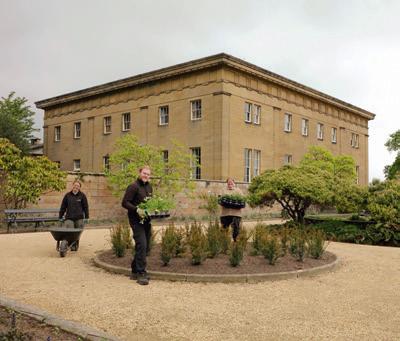
Conservation in Action at Furness Abbey
WED 14 APR, 11am –12.30 pm
Join our experts as we explore the recent conservation work undertaken at Furness Abbey – the impressive remains of an abbey founded by Stephen, later king of England, in the 12th century.
The Cradle of the Industrial Revolution
TUE 13 APR, 10 am –12 pm
Explore the cradle of the Industrial Revolution – the story of the 1761 Bridgewater Canal and why it’s orange, the Worsley Delph and its network of underground canals, a beautiuful neo-gothic George Gilbert-Scott church, pretty black-and-white half-timber buildings near the green, an alphabet bridge, the aristocratic dynasty linked to the area, plus brand new sculpture and an exciting gardens plan. Emma Fox, who leads the tour, is a green badge tourist guide for Manchester and the Bridgewater Canal in Salford.
HALL, CASTLE AND GARDENS
Peek at the Project WED 14 APR, 11am –1pm
Join Belsay Hall, Castle and Gardens’ community engagement manager and head gardener for a tour of Belsay to learn more about the conservation work and transformation that the site is experiencing as part of the Belsay Awakes Project.
BIRDOSWALD ROMAN FORT
Unearthing Recent Discoveries at Birdoswald Roman Fort SUN 18 APR, 10 am –1pm This is your chance to explore the recent discovery of the ashes of a woman and child at Birdoswald. The event will look in detail at the research and conservation work carried out on the cremation urns by the conservation team at Historic England in advance of a new display at Birdoswald.

Manchester’s Industrial Heritage
THU 15 APR, 10 am –12 pm
Join expert guide Emma Fox from Manchester Guided Tours on this walking tour of Ancoats, the ‘world’s first industrial suburb’. You will explore this fascinating area, which thrived during the Industrial Revolution, declined from the 1930s onwards, and has undergone recent regeneration. See buildings dating from the days when Manchester was the international centre of the cotton trade, and hear about how they are being developed for use today.
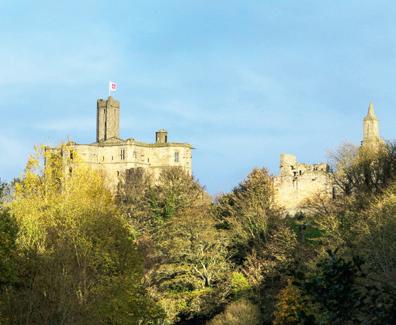
Go to the English Heritage website to check the latest information on access to sites and events
Discovering Warkworth Castle
MON 12 APR, 1pm –3pm
Join properties historian William Wyeth as we explore the fascinating history of Warkworth, set in the beautiful Northumbrian countryside. The castle was probably laid out in its present form in about 1200 and was the favoured residence of the powerful Percy family from the 14th to the 17th centuries.



Layered with 24-carat gold





































































• Finished with beautiful colour detailing









• Strictly limited to only 9,999 sets worldwide
• Highest minting quality 'PROOF'























































• Available exclusively from WINDSOR MINT
























































£19.95 for just 5 instalments of or the full amount of £99.75 (instead of £599)



YES! I want to order the strictly limited 'WWII 75th Anniversary' complete set of 12 stunning strikes (Item-No. 944-461-5) – please choose:
❑ I would like to pay in 5 monthly interest-free instalments of £19.95 each.
❑ I would like to pay the full amount of £99.75 (instead of £599). There will be no further shipments and no further obligations.
Please ensure you tick above if you prefer to pay in 5 instalments, otherwise we will debit the full amount. Your set will be sent POSTAGE FREE and with a guaranteed 60 days right of return.
















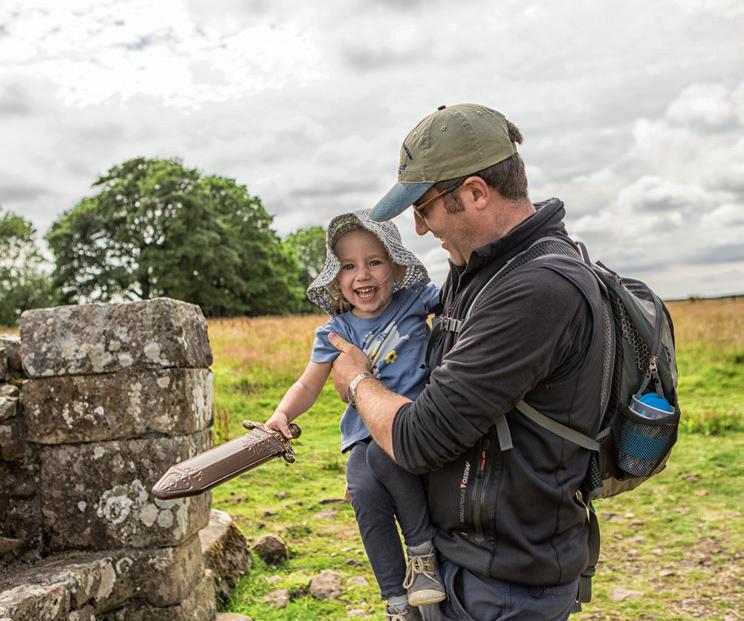

VARIOUS SITES SAT 27 MAR–SUN 18 APR, 10 am –5 pm
Join us on a legendary quest this Easter holiday at sites across the country. Crack the clues and search for the dragon eggs on our quest boards as you explore our outdoor trails. The Easter Adventure Quests cost just £1.50 per child (plus standard admission prices for non-members), and this includes a handy pencil for your answers. Online booking is essential.
Go
the




• Old Sarum, Wiltshire
• Pendennis Castle, Cornwall
• Stonehenge, Wiltshire
• Eltham Palace and Gardens
• Kenwood (Fri 2–Mon 5 Apr only, 10am–5pm)
• Marble Hill House (Fri 2–Mon 5 Apr only, 10am–5pm)
• 1066 Battle of Hastings, Abbey and Battlefield, East Sussex
• Carisbrooke Castle, Isle of Wight
• Dover Castle, Kent
• Walmer Castle and Gardens, Kent
• Goodrich Castle, Herefordshire
• Kenilworth Castle and Elizabethan Garden, Warwickshire
• Witley Court and Gardens, Worcestershire
• Bolsover Castle, Derbyshire
• Audley End House and Gardens, Essex
• Framlingham Castle, Suffolk
• Wrest Park, Bedfordshire

YORKSHIRE AND THE HUMBER
• Brodsworth Hall and Gardens, South Yorkshire
• Scarborough Castle, North Yorkshire
• Whitby Abbey, North Yorkshire
Beeston Castle and Woodland Park, Cheshire
• Belsay Hall, Castle and Gardens, Northumberland
• Birdoswald Roman Fort, Cumbria
• Chesters Roman Fort and Museum, Northumberland
• Warkworth Castle and Hermitage, Northumberland
The other events taking place around the country this spring, from half-term activities for kids to a behind-the-scenes look at Belsay Hall. To book tickets and for further information, go to www.english-heritage.org. uk/events
1066 BATTLE OF HASTINGS, ABBEY AND BATTLEFIELD
Kids Rule! at Half-Term
SAT 29 MAY–SUN 6 JUN, 10 am –5 pm
FREE (see website for non-member prices)
AUDLEY END HOUSE AND GARDENS
Kids Rule! at Half-Term
SAT 29 MAY–SUN 6 JUN, 10 am –5 pm
FREE (£20.90/£12.60 for non-members)
BELSAY HALL, CASTLE AND GARDENS
Peek at the Project tours
WED 14–SAT 17 APR, 11am –1pm
FREE (£11/£6.60 for non-members)
Signs of Spring
SAT 8–SUN 9 MAY, 11am –4 pm
FREE (£11/£6.60 for non-members)
BOLSOVER CASTLE
Kids Rule! at Half-Term
SAT 29 MAY–SUN 6 JUN, 10 am –5 pm
FREE (£13.90/£8.40 for non-members)
BRODSWORTH HALL AND GARDENS
Swing into Spring
SAT 1–MON 3 MAY, 10 am –5 pm
FREE (£13.90/£8.40 for non-members)
Kids Rule! at Half-Term
SAT 29 MAY–SUN 6 JUN, 10 am –5 pm
FREE (£13.90/£8.40 for non-members)
Kids Rule! at Half-Term
SAT 29 MAY–SUN 6 JUN, 10 am –5 pm
FREE (£12.50/£7.50 for non-members)
CHESTERS ROMAN FORT AND MUSEUM
Kids Rule! at Half-Term
SAT 29 MAY–SUN 6 JUN, 10 am –5 pm FREE (£9.90/£6 for non-members)
DOVER CASTLE
Dover at War
SAT 29 –MON 31 MAY, 10 am –5 pm FREE (see website for non-member prices)
ELTHAM PALACE AND GARDENS
Kids Rule! at Half-Term
SAT 29 MAY–SUN 6 JUN, 10 am –5PM FREE (£17.30/£10.40 for non-members)
FRAMLINGHAM CASTLE
Kids Rule! at Half-Term
SAT 29 MAY–SUN 6 JUN, 10 am –5 pm FREE (£12.50/£7.50 for non-members)
KENILWORTH CASTLE AND ELIZABETHAN GARDEN
Medieval Kenilworth Castle
SAT 29–MON 31 MAY, 10 am –5 pm FREE (see website for non-member prices)
Kids Rule! at Half-Term
TUE 1–SUN 6 JUN, 10 am –5 pm FREE (see website for non-member prices)
Tours and events
From family heritage mornings to landscape tours, personal training sessions to forest bathing, we have a wide variety of events at Marble Hill House, set in 66 acres of outstanding riverside parkland. Please check www. english-heritage.org.uk/marblehill-house-events for full listings.
OSBORNE
A Grand Family Day Out
TUE 1–THU 3 JUN, 10 am –5 pm
FREE (£20.90/£12.60 for non-members)
PENDENNIS CASTLE
Kids Rule! at Half-Term
SAT 29 MAY–SUN 6 JUN, 10 am –5 pm
FREE (see website for non-member prices)
SCARBOROUGH CASTLE
Kids Rule! at Half-Term
SAT 29 MAY – SUN 6 JUN, 10 am –5 pm FREE (£8.70/£5.20 for non-members)
STONEHENGE
A Grand Family Day Out
SAT 29–MON 31 MAY, 10 am –6 pm
FREE (see website for non-member prices)
WHITBY ABBEY
Kids Rule! at Half-Term
SAT 29 MAY–SUN 6 JUN, 10 am –5 pm FREE (£11/£6.60 for non-members)
WITLEY COURT AND GARDENS
Kids Rule! at Half-Term
SAT 29 MAY–SUN 6 JUN, 10 am –5 pm
FREE (£9.90/£6 for non-members)
WREST PARK
Archaeology Store Tours
MON 5 APR & MON 3 MAY, 11am , 12.30 pm & 2 pm
£5.50/£5.50 (£18.10/£13.10 for non-members)
St George and the Dragon
SAT 24–SUN 25 APR, 10 am –5 pm FREE (£13.90/£8.40 for non-members)
Kids Rule! at Half-Term
SAT 29 MAY–SUN 6 JUN, 10 am –5 pm FREE (£13.90/£8.40 for non-members)





























































Tablets – iPads and Android tablets – can be great once you know how to use them. It’s amazing all the things they can do. And possibly the best thing tablets can do for you is help you keep in touch with family and friends. I don’t just mean letting you send emails instead of writing paper letters, though that can be handy.
In just a few taps of the screen you could be talking to them as if they were sat right there beside you.
But when you buy a tablet, there’s something missing.
It’s not the charger (hopefully!).
It’s not a case, though it’s usually a good idea to buy one to protect your new tablet.
It’s a manual – something to show you how to use the thing. The manufacturers seem to assume that you’ll just know how to use it, as if by magic. It’s “intuitive,” they say.
Well, it can be. In parts. But there are other things you simply need to know how to do. It’s not obvious that you have to swipe from the top of the screen, pull up from the bottom or tap with two fingers instead of one.
Who would know you had to use two fingers and pull them apart on the screen or rotate them... or that they’d bury the option you want behind three little dots?
Things like that you just can’t know –someone has to explain it to you.
But if you do ever find a book about it or get someone to tell you, they always seem to assume you already know how to do it. Daft, really – you wouldn’t be asking if you did. But they whizz through it so fast you can’t possibly take it in. Not to mention the steps they leave out because “everyone knows that”!
That’s where a set of books from a small, employee-owned company based in Cumbria comes in. They’re called The Helpful Book Company and lots of their customers say they certainly live up to their name!
They’ve published iPads One Step at a Time and Android Tablets One Step at a Time – and these books have proved

hugely popular with all sorts of people who have a tablet – but who aren’t experts at using it.
Whether you’re frustrated with the very basics, want to know what else it can do for you or wish you knew how to do some of the slightly fancier things, this book might be just what you need.
It explains everything nice and simply, in plain English, without all the confusing jargon and gobbledegook. And it has lots of pictures showing exactly what to do –where to tap the screen and so on.
“Plain English without all the confusing jargon and gobbledygook”
The company have already published books about computers and smartphones
that have helped thousands of people. But they actually started much smaller – the author wrote some notes to help his Mum and Dad on their PC and realised that other people might find them useful too. Several thousand happy people later, he decided to bring out a book on tablets as well – and if you’ve ever been frustrated with your tablet, it’s worth finding out more.
As a small independent publisher, the books aren’t in the shops or available on Amazon, but you can get a free information pack telling you about what’s covered in the books, who they’re suitable for and how to get hold of them.
Just ring 01229 777606 today, post back the coupon below or email EH0321@helpfulbooks.co.uk
Yes, please send me a free info-pack about: iPads One Step at a Time and Android Tablets One Step at a Time It’s free & there’s no obligation.
Test your knowledge of the historic gardens at our properties with this quiz
1 Which flower, grown and picked at Osborne, has been carried by royal brides since the 1850s?
2 In the glorious gardens of which English Heritage property can you cross this Chinese-style bridge and visit a Chinese-style summer house?

3 What fruit tree, still growing today in the gardens at Kenilworth Castle, did Queen Elizabeth I reputedly name Black Worcester?
A Pear
B Apple
C Cherry
4 Which poet is believed to have helped design the gardens at Marble Hill House, southwest London?

5 The most unusual inhabitant of the glasshouse at Walmer Castle is the queen of the night, which flowers only at night. What kind of plant is it?
6 At which medieval site can you still find a monk’s cell with its own hortus conclusus (enclosed garden)?
7 The Edwardian-inspired garden at Carisbrooke Castle, redesigned in 2009 by former BBC Gardeners’ World presenter Chris Beardshaw, is named after which of Queen Victoria’s daughters?
A Alice
B Beatrice
C Louise
8 In the gardens of which English Heritage property can you watch the spectacular Perseus and Andromeda fountain ‘firing’?

9 The Grotto at Brodsworth Hall, created in a former quarry, is home to an important collection of what kind of plant?
10 In the gardens of which English Heritage property can you cross London’s oldest working bridge, dating from the late 14th century?
11 Belsay Hall is home to a national collection of which unpleasantsmelling flower?
12 The gorgeous landscape around Kenwood House was designed by Humphrey Repton. How big is the parkland surrounding the house?
67 acres

13 In the Elysian Garden at which English Heritage property can you admire a bridge designed specifically for tea parties?
Log into the Members’ Area at www.english-heritage. org.uk/quizzes to check your answers
14 One of Charles Darwin’s scientific experiments involved playing music to what creatures in the garden and meadows at his home, Down House?
15 Which design movement championed by William Morris is exemplified in horticulture by the gardens at Mount Grace Priory, and influenced the grounds at Eltham Palace?

16 At which English Heritage site can you stroll around the Queen Mother’s Garden, which was given to her on her 95th birthday?
17 What is peculiar about sundews, which were among the plants grown by Charles Darwin in his greenhouse at Down House?
18 Who planted the venerable southern magnolias at Osborne in the 1850s – making them nearly 170 years old?
19 Which medicinal plant, grown by Carthusian monks in the 15th century at Mount Grace Priory in North Yorkshire, was used to treat toothache?
20 Who originally created the area now known as the Elizabethan Garden at Kenilworth Castle?
If you don’t have internet access, please contact our customer services team on 0370 333 1181 for the answers

How industrialist Sir Isaac Lowthian Bell’s Arts and Crafts mansion became a retreat for his granddaughter Gertrude between her Arabian adventures
In the small parish church of St Lawrence in East Rounton, North Yorkshire, there is a stained-glass window depicting scenes that are somewhat unusual. On the left is the Matterhorn in the Alps above an image of Magdalen College, Oxford, and on the right there is a view of al-Khadimain mosque in Baghdad with a camel train above it. Designed by Douglas Strachan, this remarkable window is dedicated to the memory of an equally remarkable woman, Gertrude Bell (1868–1926).
Gertrude was one of the most accomplished women of her age. She enjoyed mountaineering; wrote a number of books; spoke Persian, Arabic, French and German; translated Sufi poetry; and studied photography, cartography, botany and archaeology. Recognised as an expert in Arabian desert travel and politics, she served as an adviser to kings and politicians, and played an instrumental role in the foundation of modern Iraq.
Gertrude spent her early years at her family home of Red Barns in Redcar. Her grandfather, industrialist Sir Isaac Lowthian Bell, lived in Rounton Grange, a large country house that he built close to Mount Grace in 1876. It was designed by the Arts and Crafts architect Philip Webb, with interiors created by William Morris and Edward Burne-Jones.
Lowthian Bell’s interest in the Arts and Crafts movement appears to have stretched to an appreciation of all things medieval. After receiving a letter from the Society for the Protection of Ancient
‘Bell was one of the most accomplished women of her age’

Buildings expressing concern about the future of Mount Grace Priory, he purchased the estate himself in 1898.
As Gertrude’s letters show, she knew the priory well and visited the ruins often with friends or for picnics. It may not be too fanciful to think that her interest in archaeology sprang from witnessing the investigations that took place here in the 1890s.
After studying modern history at Oxford, Gertrude set out to travel the world, gravitating towards the
Middle East, where she settled. During her travels abroad she mentioned the priory many times in her letters home.
Gertrude’s last visit to Mount Grace was in 1925, when she returned to visit her parents Hugh and Florence before her unexpected death in Baghdad in 1926.
PLAN A VISIT
For more information about Mount Grace Priory, House and Gardens, go to www. english-heritage.org.uk/mount-grace-priory
Stay in the places where history happened www.english-heritage.org.uk/holidaycottages

For the latest bookings and COVID-19 information, please visit: www.english-heritage.org.uk/visit/holiday-cottages/ booking-information/covid-19-information
